- Skip to primary navigation
- Skip to main content
- Skip to footer

(866) 300-5984 [email protected]

What are the Requirements for Earning a Captain’s License ?
U.s. coast guard requirements for national oupv or master up to 100 tons.
A Captain’s License is required to operate a commercial vessel or to take paying passengers out on your vessel. Understanding the Captain’s License Requirements is important prior to taking a captain’s license course. The prerequisites should be reviewed before applying for any U.S. Coast Guard credential. This is advised so you don’t spend your time and money pursuing a license that you don’t qualify for. For Maritime Institute’s fee-based credential services, click here to get more info.
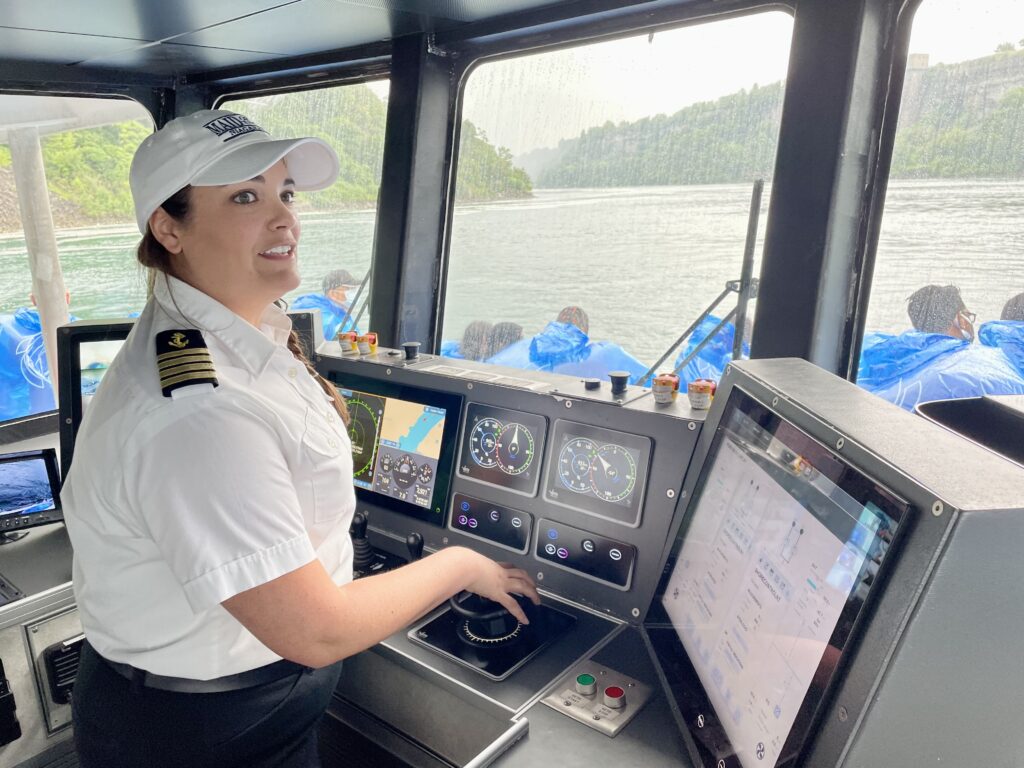
Prerequisites for Operator of Uninspected Passenger Vessels (OUPV/”6-Pack”)
The National OUPV license is limited to uninspected vessels, of less than 100 gross tons, operating on U.S. domestic waters ONLY. Also limited to carrying six or less paying passengers. You must meet all of the requirements established by the USCG National Maritime Center in order to apply for this license. The USCG checklist of requirements is located here on the National Maritime Center website: https://www.dco.uscg.mil/nmc/checklist/ . Under National Officer Endorsements for Deck, click on National OUPV Less Than 100 GRT.
Important sea service requirements for OUPV:
- Must be at least 18 years old.
- Must be able to document 360 days of experience on a vessel, of which at least 90 days must be on Near Coastal/Ocean waters otherwise license will be limited to Inland Waters ONLY. ( See: What Counts as Sea Service )
- 90 days of sea service must be within the last 3 years of when you apply.
- 90 days of sea service must be on Ocean or Near Coastal waters or otherwise the license will be limited to Inland Waters only.
- If you are not a U.S. Citizen, you can apply for this license but it will be limited tonnage and restricted to undocumented vessels.
Prerequisites for Master up to 100 Tons on Inland Waters/Great Lakes
With a Master license you may operate inspected/commercial vessels and also take more than six paying passengers. You must meet all of the requirements established by the USCG National Maritime Center in order to apply for this license. The USCG checklist of requirements is located here on the National Maritime Center website: https://www.dco.uscg.mil/nmc/checklist/ . Under National Officer Endorsements for Deck, click on National Master 100 GL and Inland.
Important sea service requirements for Master Inland/GL:
- Must be at least 19 years old.
- Must be able to document 360 days of experience on a vessel. ( See: What Counts as Sea Service )
- The tonnage of the license (25 Ton, 50 Ton, or 100 Ton) that you get, is determined by your experience. See USCG checklist in the paragraph above for the specific tonnage qualifications .
If you plan on operating an inspected sailing vessel, you must have a sailing endorsement along with the Master Inland/GL license. The required amount of sea service for a sailing endorsement on a Master Inland/GL license is: 180 days on sail or auxiliary sail vessels.
Prerequisites for Master up to 100 Tons on Near Coastal Waters
With a Master license you may operate inspected/commercial vessels and also take more than six paying passengers. You must meet all of the requirements established by the USCG National Maritime Center in order to apply for this license. The USCG checklist of requirements is located here on the National Maritime Center website: https://www.dco.uscg.mil/nmc/checklist/ . Under National Officer Endorsements for Deck, click on National Master 100NC .
- Must be able to document 720 days of experience on a vessel, of which at least 360 days must be on Near Coastal/Ocean waters. ( See: What Counts as Sea Service )
If you plan on operating an inspected sailing vessel, you must have a sailing endorsement along with the Master Near Coastal license. The required amount of sea service for a sailing endorsement on a Master NC license is: 360 days on sail or auxiliary sail vessels.
- Cookie Policy
- Privacy Policy
- Terms of Use
Sign Up For Our E-Newsletter!
Maritime Institute Online Course Portal Book Examination - Everett, WA Book Examination - San Diego, CA
Privacy Overview
Log in to maritime institute.

How to Get Your Captain’s License –A Step-by-Step Guide
From captain requirements to the coast guard application process – how to navigate the process of becoming an official boat captain.

Like all other areas of professional endeavor, getting a Captain’s license is an essential and non-trivial process. Despite the years between my earliest thoughts on having one and actually applying…or perhaps because of that time…I am quite proud to call myself Captain !
From the time I was Quartermaster aboard the Chesapeake Lightship back when she was berthed in Washington, DC, I had wanted to get my Captain’s license. We in her crew had plenty of sea time. The late Capt. Joe Murray, John Hart, and particularly Chris Krusa saw to it that each of us developed our skills and knowledge beyond the minimum that we needed for our jobs. We met collectively with a Coast Guard officer to explore the options for us all getting licensed; however, the wind was taken out of our sails so to speak when he told us that since most of us were not 18, we were not entitled to take the written exam.
I left that session crestfallen but I put it all behind me as I moved on with a career in research physics. Later, I learned that what the officer SHOULD have said is that if we had just waited (a few months) until we turned 18, we could have taken the exams. Years later, my problem was that I could not meet the requirement to have 90 days of sea time in the last 3 years. My employer would have more than frowned on my having been gone so often. And all of us had not even bothered to ask for sea service forms or letters to document our time on the Chesapeake.
Fast forward 34 years and serendipitous events led to my being able to get signed sea service forms for my time on the Lightship. Shortly thereafter, I became a boat owner WITH vacation time afforded to a very senior engineer in the company.
Long story short, I am Capt. Rob Chichester – 200 Ton Master with Auxiliary Sail and Assistance Towing Endorsements.
Navigating the path to a Captain’s license can be full of the brambles of regulations, forms, and oddly worded requirements. In this article, I will try to clarify the process and help interested skippers decide what type of license, scope, and tonnage they should pursue. Then I will discuss the application process and all the elements needed to assemble a successful license application package.
More Resources: If you would like a one-on-one consultation to have your specific questions answered on this topic or others related to boating, please sign up for 30 minute video consultation with me!

The Basics of a Captain’s License
A first time applicant will need to decide while type of license to pursue. There are two types available to one applying for a new license.
- You may apply for a license to be an Operator of Uninspected Passenger Vessel (OUPV) or the more familiar “Six Pack” license. It is so called because the holder of this license is limited to carrying no more than 6 paying passengers on any vessel within his tonnage rating regardless of the maximum capacity rating for the vessel.
- The other option is a Master’s license which allows you to carry up to the maximum number of passengers indicated for the vessel in question. Whereas a Master’s license requires US Citizenship, an OUPV license holder can be non-US citizen. Clearly holding a Master’s license offers more opportunities; however as I will explain later, the knowledge requirements are appropriately greater.
The scope or route for one’s license is the waters in which you are authorized to function in your licensed capacity.
There are effectively three such areas defined:
- The first is Inland which covers all inland rivers and bays not otherwise outside the demarcation line for the high seas. This may also include portions of the Great Lakes up to the International boundary line. (I will not explicitly discuss the Great Lakes or Western Rivers in this article but those waters are also covered by an Inland scope with a specific endorsement for each.)
- The second route is near-coastal which means ocean waters not more than 200 miles offshore. By extension, a near-coastal route endorsement includes inland waters as well.
- Lastly, Oceans refers to all waters seaward of the Boundary Lines as described in 46 Code of Federal Regulations (CFR) Part 7.
Tonnage rating is determined by the size vessels upon which an applicant has served. The tonnage is not simply the weight or displacement of a given vessel. It is not how much stuff you had loaded on a boat. It is a calculation of theoretical displacement if the complete available interior volume of a ship were filled with material of density 1 (i.e., water).
There are formulas available to estimate that based on the dimensions and type of boat. The calculations are necessarily different for a sailboat and a power boat. On a very rough order of magnitude, a 100 Ton powerboat would be about 80 feet long and a 100 Ton sailboat would be about 100 feet long. The tonnage rating is a not to exceed limitation.
One need not necessarily serve on a 50 ton or 100 ton vessel to earn the equivalent tonnage rating (see the table below for specifics on that). One cannot be granted more than a 100 Ton rating on an initial license because higher tonnage requires that one has served in a licensed capacity before applying for the higher tonnage. When I renewed my license in November, I applied for a 200 Ton rating which was granted conditional to my successfully passing the mandated written test. By the time you read this, I expect to have taken that exam.
Tonnage and route are determined by one’s documented experience. While you may apply for a 100 ton rating, you may only be granted 50 tons (or less) if your experience does not justify the higher rating. Additionally, the greater the scope, the more sea time is required to qualify for the rating.
For example, while an Inland scope needs 360 days of total sea time with 90 days in the last 3 years, a near-coastal scope requires 720 days and again the 90-day recency requirement. The take-away here is that experience is a big determinant and should NOT be discounted in any way. Note that there is no path to being granted an Ocean scope except by being a licensed mate or master for at least 2 years with documented service on those waters. That is, it is impossible to apply for an Oceans scope on a first application.
It should be noted that an OUPV license is automatically issued with a 100 Ton rating. As coarse as this may sound, the reason is that it is assumed that with an OUPV license, the most damage one can do is to 6 people. Therefore, there is no particular benefit to issuing OUPV with varying tonnage ratings. New Master’s licenses are issued with ratings of 25, 50, or 100 tons. Discussions of ratings over 100 tons or Ocean routes are beyond the scope of this article. You may contact the author if you wish more information on those specific topics.
The table below is a guide to determining for what rating one may qualify.
Your Sea Time Experience
For a Near Coastal route, ideally, all of your time will be on Near-Coastal waters; however, you are allowed to substitute up to half of the 720 days required minimum with Inland route service. For the purposes of documenting sea time for a Near Coastal route, any time served beyond the 3-mile limit counts for that purpose. So if you charter in the Caribbean or crew on an offshore fishing trip, that time counts.
Just to be clear, sea time is not counted unless you are a working member of the crew of the vessel named on the sea service form. That is to say, just being a passenger is not sufficient.
To keep things on the up and up, the applicant is required to get the signature of the owner, manager, or master of the vessel on the sea service form. If the applicant owns the identified vessel, proof of ownership must accompany the form. Proof might be a Bill of Sale, vessel document, or a state registration.
Sea time is not counted unless you spend at least 4 hours of a given day underway . Being onboard the boat at the dock swabbing the decks does not count. Time underway is counted whether it is in route or adrift. Being anchored or moored also does not count. It can be tedious to collect and collate all of your sea service forms, especially after the fact. My best advice is even if you are only thinking about getting a license, keep blank sea service forms with you for the vessel operator to sign at the end of a trip. Note that the forms are not per trip but per vessel. There is room to document up to 5 years of sea time on any given vessel. There is room for five years of data because your license will be up for renewal every 5 years .
Technically, vessels over 200 gross tons now require a Service Letter from the employer or vessel manager. However at the time I applied for my original license, I submitted my time on the Chesapeake Lightship on a Sea Service form (CG-719S). That form was accepted for that as well as again when I renewed and requested an upgrade to 200 Tons. I may have been grandfathered so new applicants should verify their individual situations with the National Maritime Center .
Health and Medical
To be a Captain, one must be in good health and of reasonable physical ability. The Medical form ( CG-719K ) is the most extensive form one will need to complete. It also requires the signature of a licensed physician. Unlike an FAA pilot’s license, the physician need not be approved by the US Coast Guard. Your family doctor is acceptable.
For my part, I completed as much of the form as was reasonable. I then FAXed the form ahead of my annual physical so that the doctor could review what was needed and to be prepared to sign off on it. The only extra thing the doctor had to do was conduct color vision and standard wall chart vision test. Your vision need not be perfect without glasses but if that is the case, you should expect a requirement to be written on your license requiring corrective lenses to be used and a spare pair to be available when on duty. If your medical form is accepted, you will be issued a separate medical form which is to be kept with your Merchant Mariner Credential. There is a pocket on the back cover to hold it and the required Transport Worker’s Identification Card ( TWIC ). The TWIC will be addressed below.
Another form to be completed, this time by an authorized physician, is the DOT five-panel drug test . An applicant must submit proof of drug testing with no findings as determined by an authorized physician. Also be aware that to work aboard any vessel in any compensated capacity, you must have proof of participation in a drug test program, whether it be one in which you elect to participate as an individual or one required by your marine employer. Such proof is to be carried with you at all times just as your license and medical certificate must be. It is generally in the form of a letter attesting to your compliance and passing a test within 12 months of the date of the letter.
Criminal and National Security Background
One has always been required to agree to a criminal background and driving record check . As you can well imagine, adverse findings in either of these areas will negatively affect one’s application.
With the creation of the Department of Homeland Security (DHS), a requirement was added that licensed mariners have a TWIC card . In fact, anyone working in the transportation sector (air, rail, marine, trucking, etc.) is required to have a TWIC card. You will be investigated for any evidence of threat potential to national security. This is because as a licensed Captain, you may have access to vital and strategic marine facilities.
The TWIC card is issued by DHS through a federal contractor. There is an application to complete and a fee to pay. Furthermore, you must appear in person so that your photo and fingerprints can be taken. This bio-metric data is stored on the TWIC card and protected by a pass code. You must submit a copy of your TWIC with your license application; therefore, one must start the TWIC process at least four to six weeks or more before submitting one’s license application.
Separately, a photograph of the applicant must accompany the application. This can be a driver’s license or passport photo . It should be a state or federal government issued document. Others may be accepted but the applicant should verify this with the NMC before submitting the application to avoid processing delays.
- Coastal Navigation
- Deck General Knowledge
- Rules of the Road
Deck General includes a wide variety of topics including fire and safety, terminology, and laws and procedures. Rules of the Road covers exactly what it says. Bear in mind that even if you are applying for an Inland or Near Coastal license, the Rules of the Road test will include elements of International Rules. So when you are studying, do not neglect to familiarize yourself with those details. There are some variations in vessel precedence, sound signals, and lights and shapes displayed by vessels.
If you are applying for a Master’s license, there are additional areas of test. The same is true if you are additionally requesting an endorsement for Sail, Auxiliary Sail, or Commercial Assistance Towing. The net effect is more questions overall.
You must score at least 70% in all areas except Rules of the Road for which you must have a minimum score of 90% to pass . Generally, that means you may miss no more than 3 questions to pass with a 90% grade. The Navigation questions will require you to work with a chart to plot position, routes, and so forth.
You may either pay an examination fee to take the exams administered by the Coast Guard or you may enroll in any number of approved Captains’ courses. You will receive a certificate of completion from the school to submit with your application in lieu of the Coast Guard exams; however, you will still take exams which include questions from the same list of questions that the Coast Guard uses. In the latter case, you will not need to pay an examination fee but obviously, you will have to pay a tuition for the course.
Completing your Application
The license application is not unlike many others. It is actually shorter than the medical form discussed earlier. There are two things to note on the application:
- Item 1 of Section IV describes how one may be asked to serve on behalf of the country in times of national emergency. An example of this was the massive sealift conducted in support of the first Gulf war in the 1980’s, Operation Desert Storm. This is a voluntary action. However it should be noted that during the call up for Desert Storm, more mariners were needed than responded. It is a possibility, particularly in these times, that another such national emergency could arise.
- Secondly, Item 5 of Section IV contains an oath to which an applicant must swear. If you present yourself in person you will be sworn in by Coast Guard personnel. If you choose to submit your application by mail or electronic means, you must provide proof that you appropriately took the oath as written. This generally means being sworn by a Notary or a local government official such as a county clerk.
Payment of all required application and examination fees is made online prior to submitting the application. You will receive a receipt which you should include with your application package. Pay close attention to the various fees and be sure you select all that apply but ONLY those that apply. An error either way will delay processing of your application.
Submitting your Application
When you apply for an original license and especially if you plan to take the Coast Guard exams , you will need to present yourself in person with your complete application package at a USCG Regional Examination Center (REC). Photo ID will be necessary as well.
One thing that happens if you appear in person is that you will raise your right hand and take the oath on the application. That was a very moving moment for me. Delivering your application package in person also allows you to interact with the personnel directly which could be very valuable if there are errors or omissions in your application package.
If you are not taking the Coast Guard exams and if you have been sworn by an authorized official, you may wish to submit your application by mail or electronically. Be aware that electronic submission has a limit on the size of the email attachment. My applications have always been larger than what is accepted by the Coast Guard mail servers.
Waiting for Your License
The Coast Guard has implemented a very good system of tracking your application and providing feedback at every step of the way. You will receive emails as the application moves through the system. It may take up to a week for the REC to review and forward your application to the National Maritime Center (NMC) in West Virginia. That was my experience with the New York City REC. It may be less in smaller, less congested venues.
By the way, you are not required to use the REC nearest to you. If you wanted to fly to Hawaii or Alaska instead of driving into Baltimore, you may do so. A good friend of mine drove from New Jersey to Boston to submit his application there because he heard the processing times were less than for New York.
Once the NMC has your package, the process usually will not take long at all. It is very likely you will receive 2 or 3 emails a day, often within minutes, as the application moves through the various approvals. Nothing beats the feeling you will have when you get the final email saying that you have been approved and your credential is being printed!
My original license took slightly more than two weeks from dropping off my application at Battery Park in New York to finding my MMC in my mailbox.
Once you get your license, look it over thoroughly. You may not necessarily have been granted the scope and rating you requested. Sometimes that reduction will be legitimate. Other times, it may be due to an honest mistake. Both my original and renewals had honest omissions. I was only granted a 50 ton rating on my original license when I had applied for 100 tons. I submitted the sea service form supporting the request for 100 tons after the fact and I received an endorsement sticker for the 100 ton rating a week later. Similarly with my renewal, I asked for an upgrade to 200 tons. My renewal was approved at 100 tons. When I contacted the NMC, they amended the approval and showed that I was then approved to take the required test for the 200 ton upgrade. So my message here is to not necessarily accept the delivered MMC as if it were carved in stone.
More Resources from Captain Rob
Being a licensed Captain is a great source of pride to me. I have enjoyed working with my clients as well as pursuing other commercial opportunities like relief captain jobs on various schooners, water taxi and tow boat jobs, and tour boat and ferry captain work. I look forward to many years of working on and enjoying the water.
If you would like a one-on-one consultation to have your specific questions answered on this topic or others related to boating, please sign up for 30 minute video consultation with me!

Recommended Reading
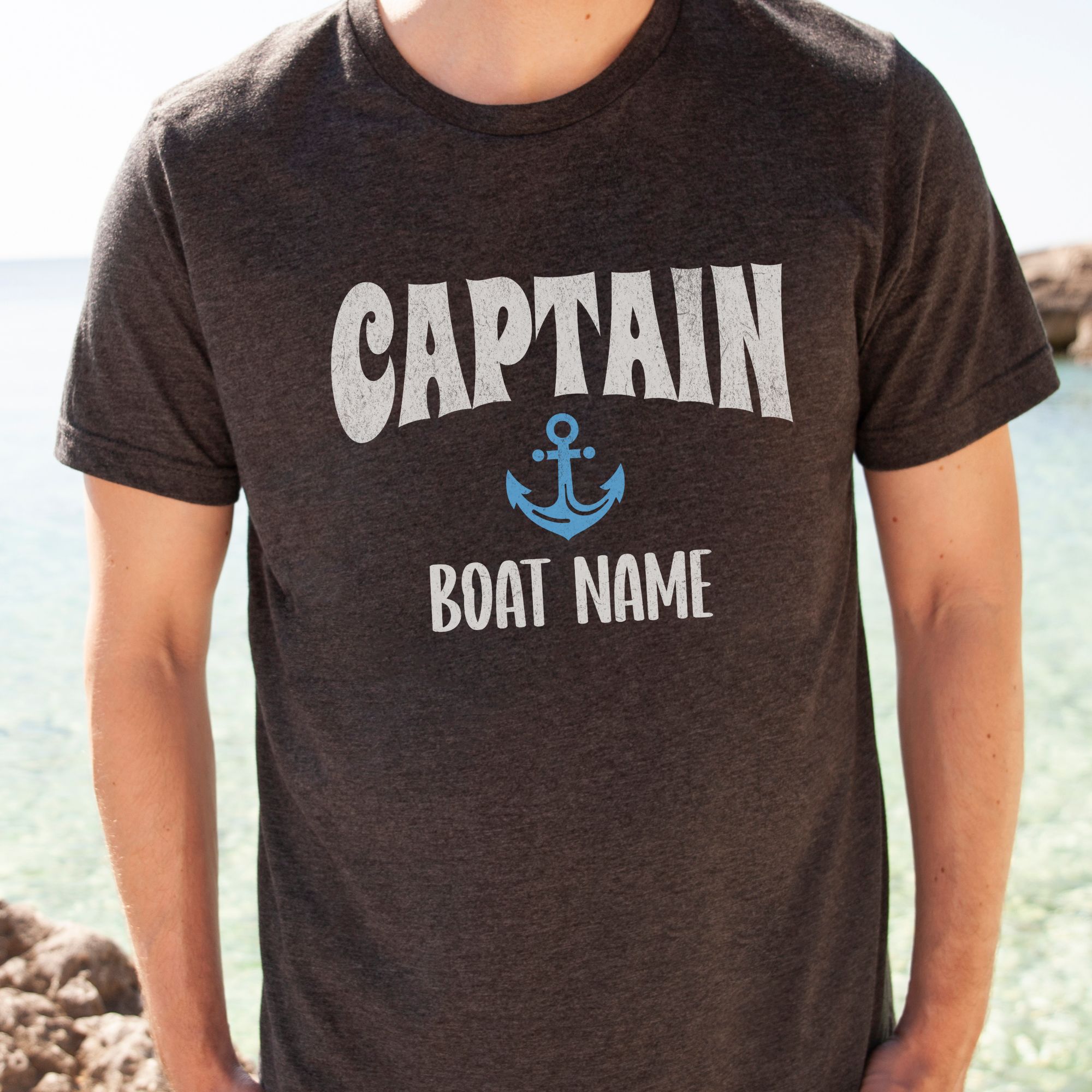
Captain Anchor Custom Boat Name Shirt
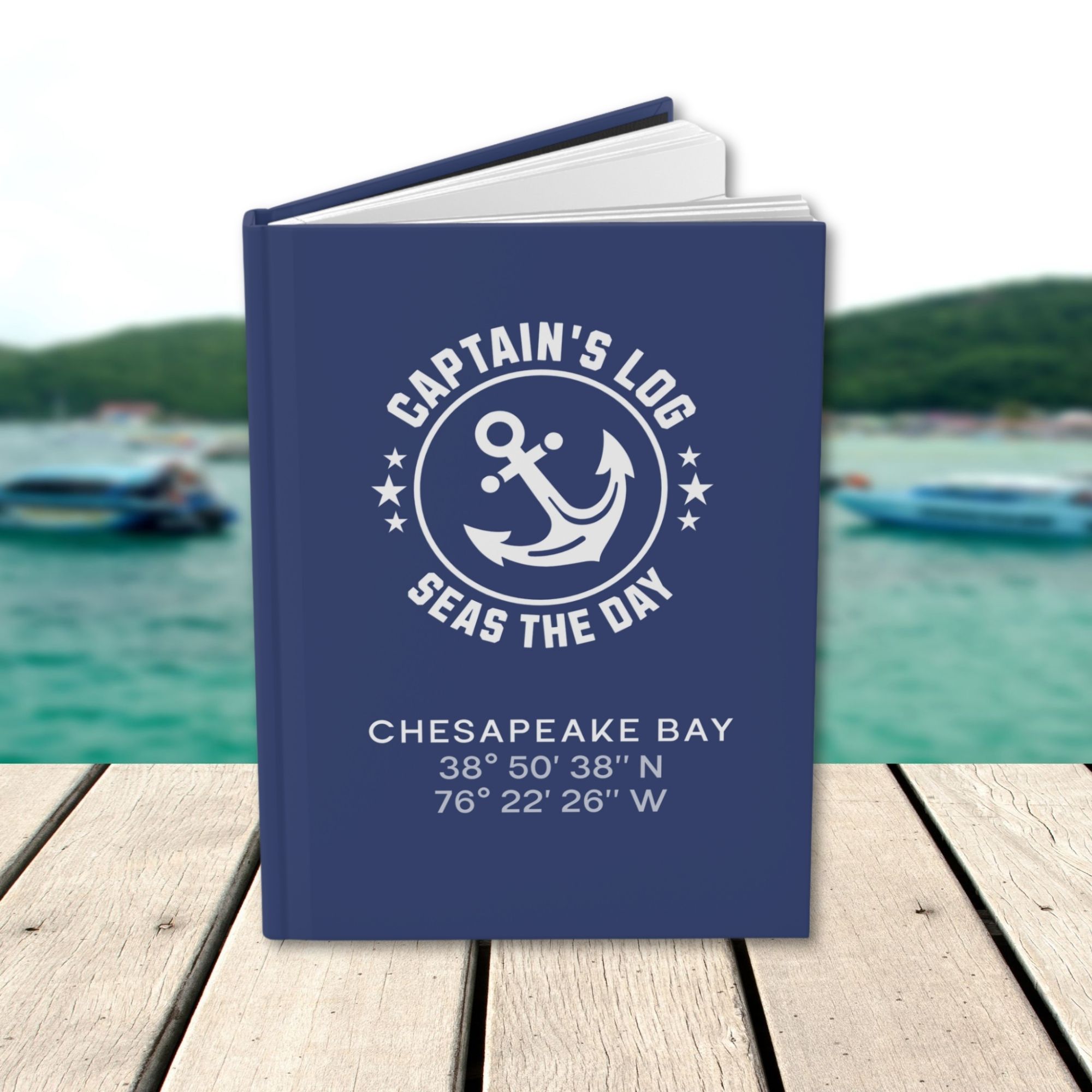
Captain’s Log Book Personalized with Boat Name – Anchor
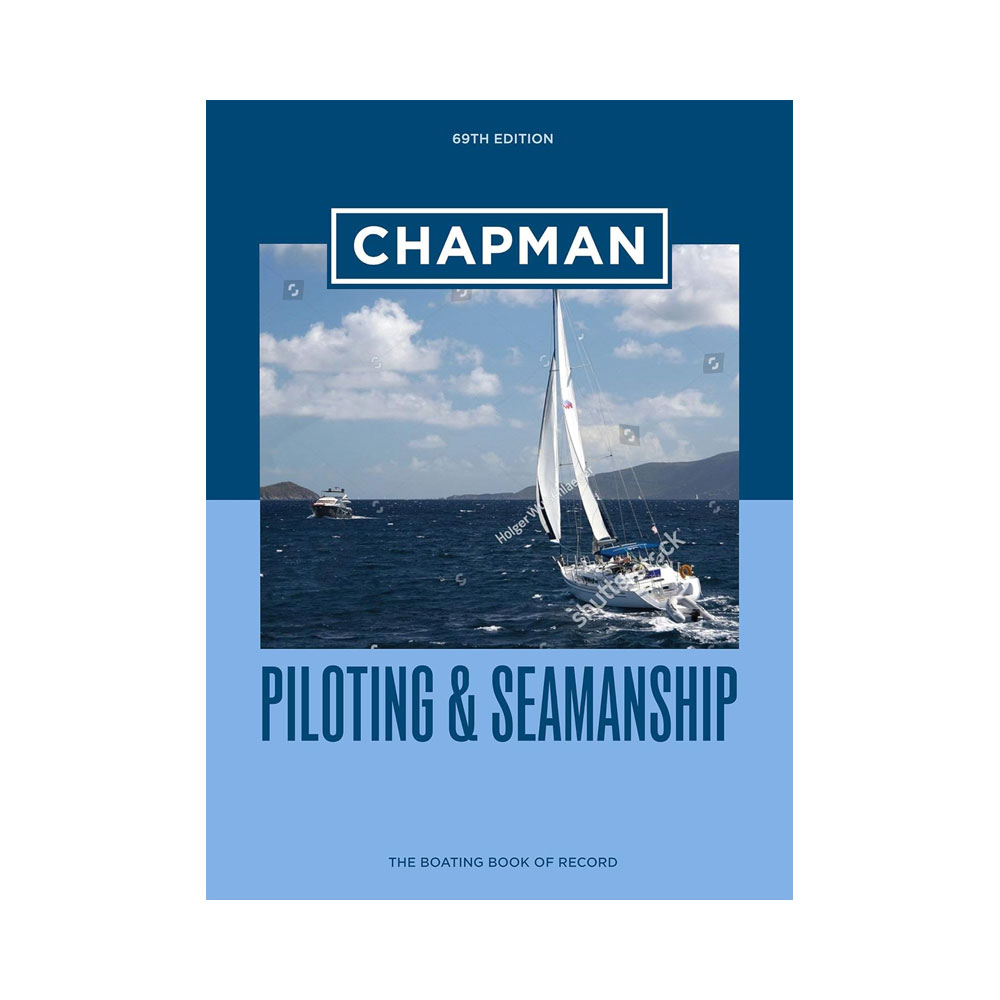
Chapman Piloting & Seamanship 69th Edition
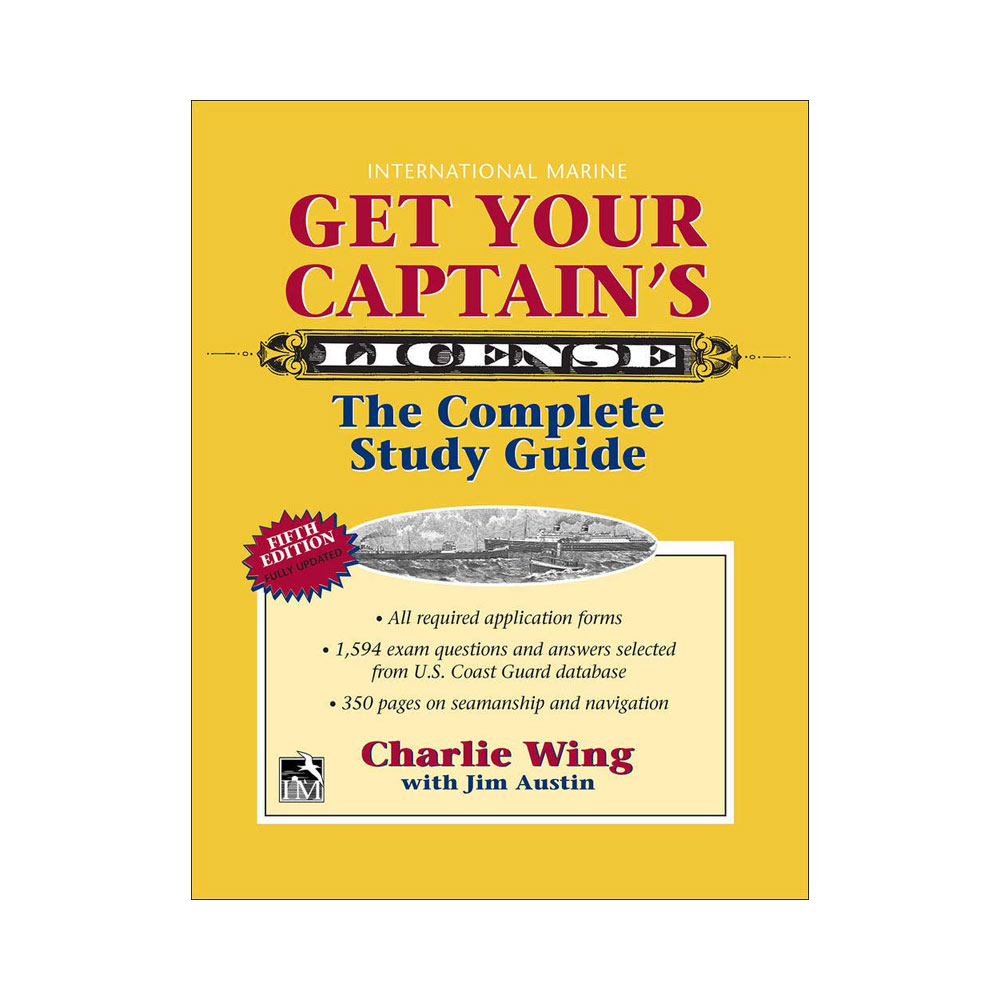
Get Your Captain’s License Study Guide
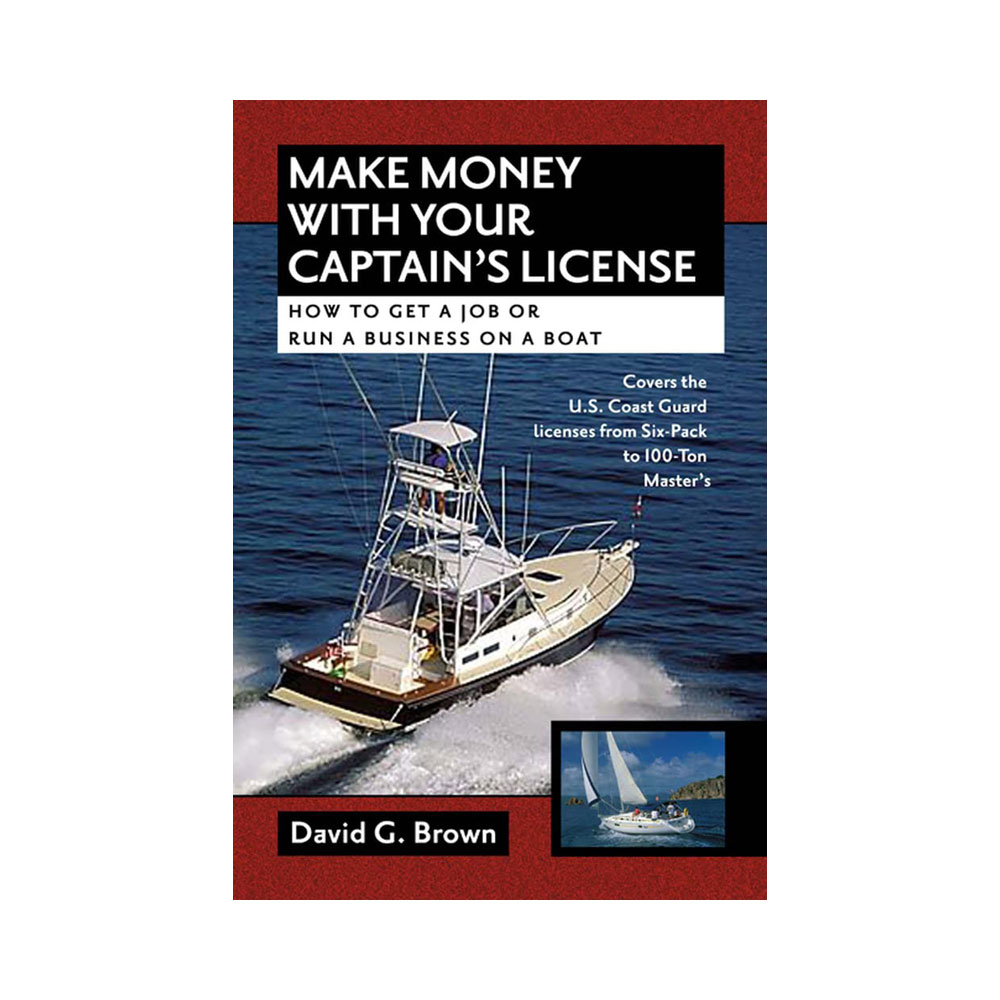
Make Money With Your Captain’s License Book
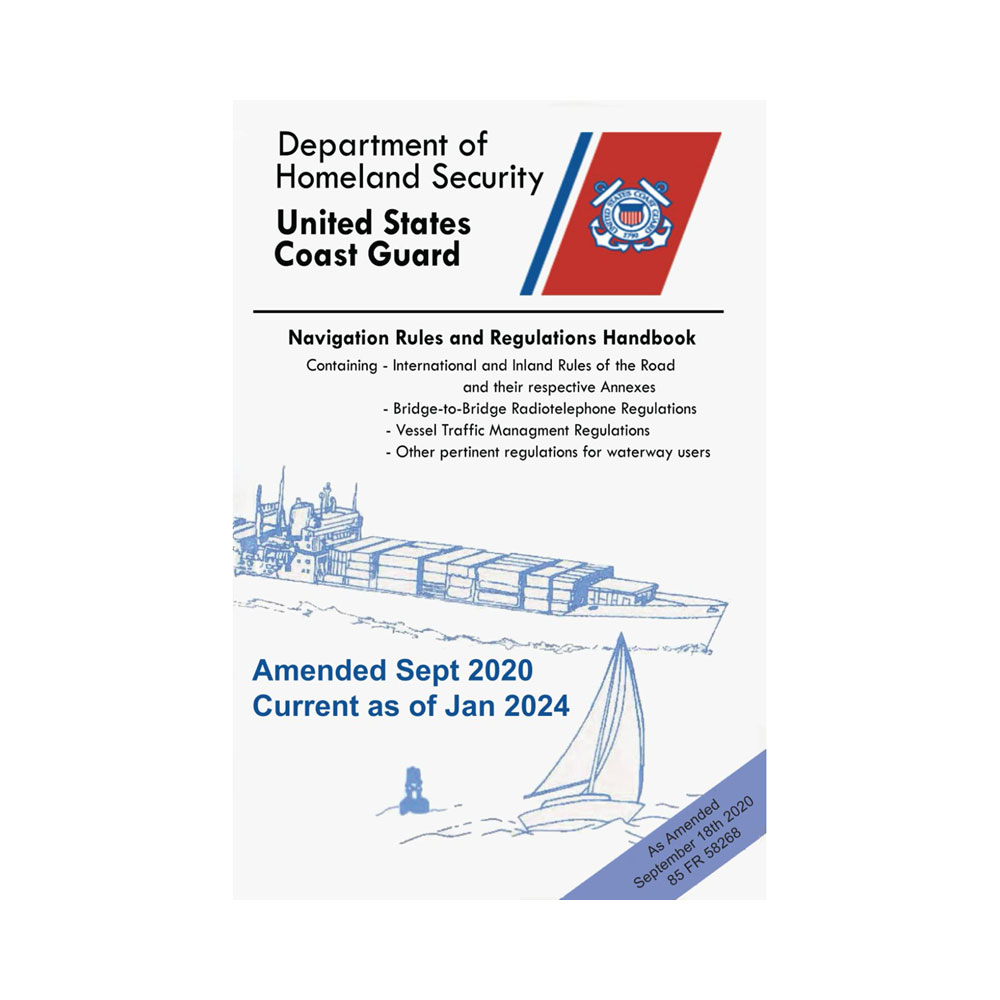
USCG Navigation Rules And Regulations Handbook
Trending now: must-have boat gear for your boat life.
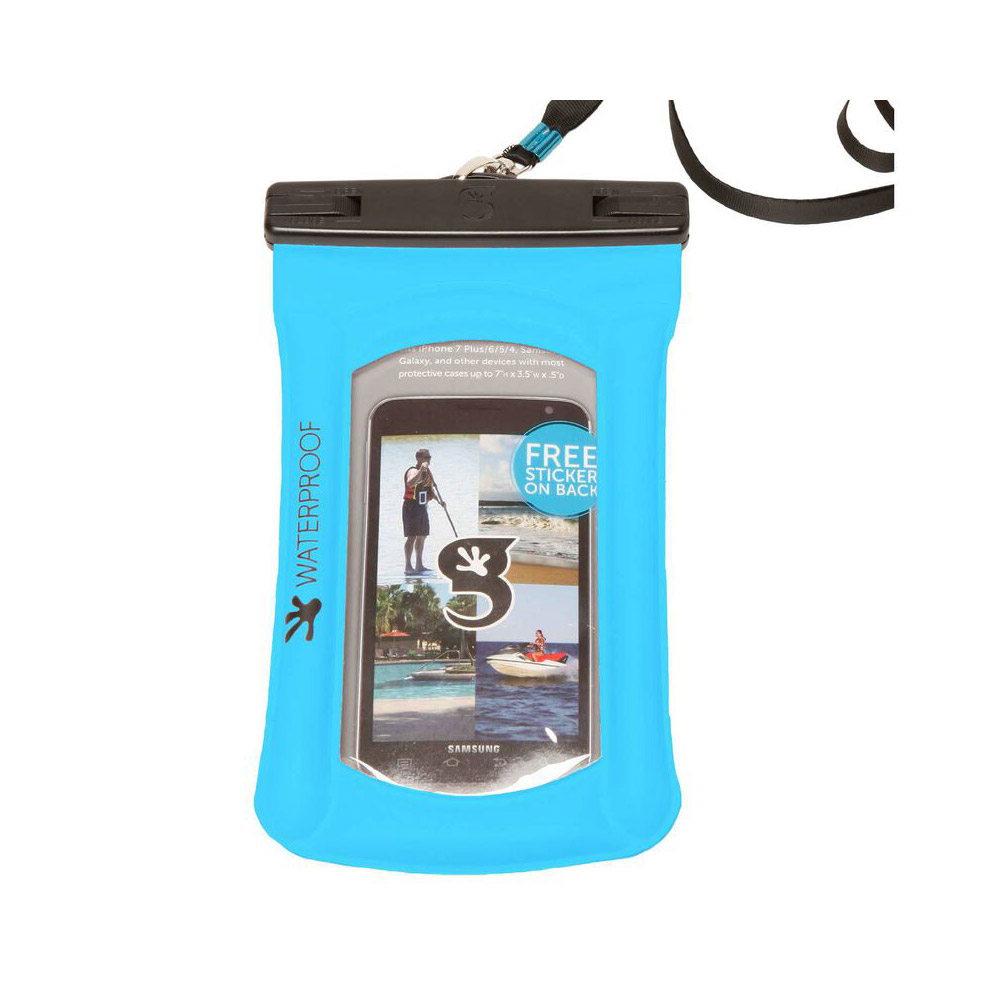
Geckobrands Float Phone Dry Bags
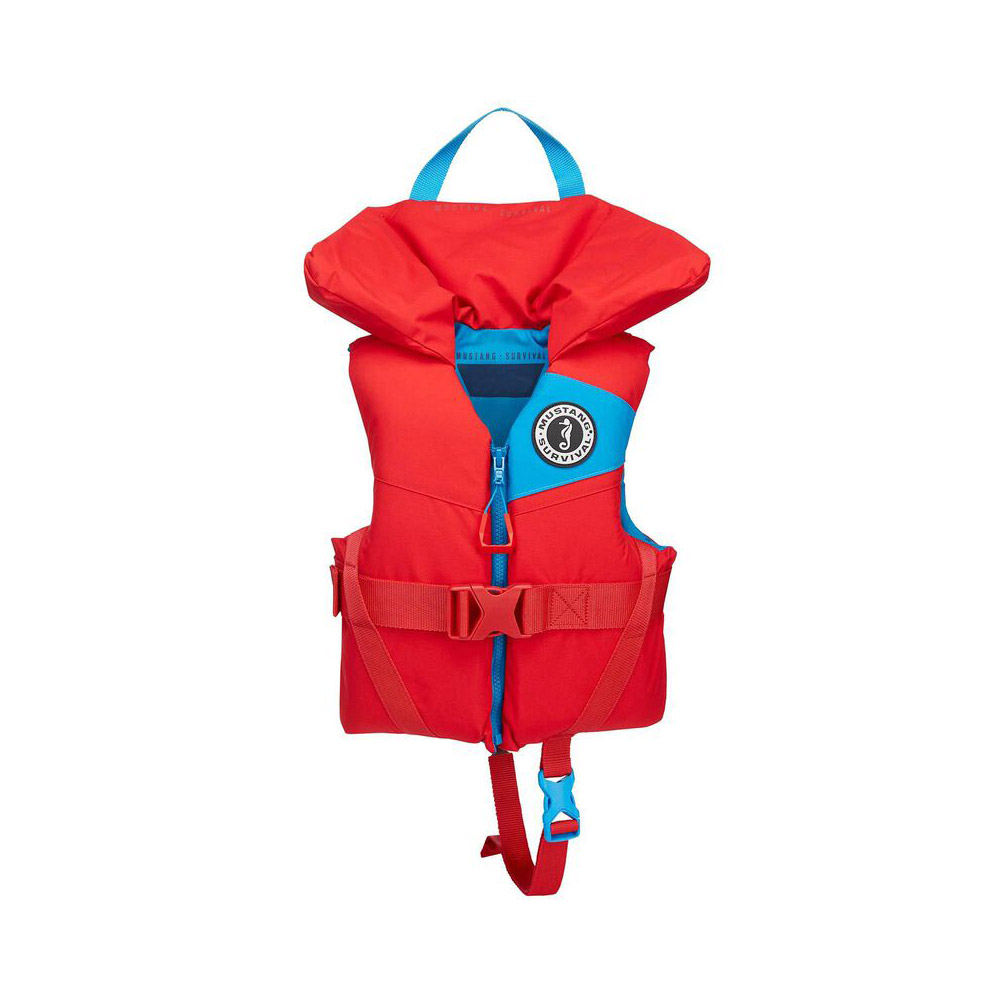
Mustang Survival Lil’ Legends Infant Jacket
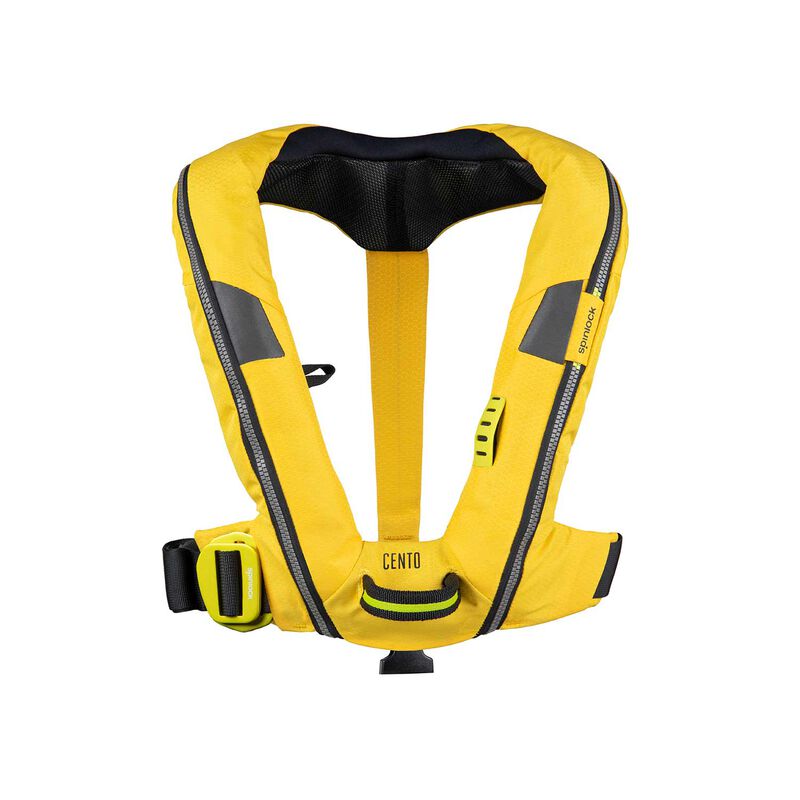
Spinlock Deckvest Junior Inflatable Life Jacket
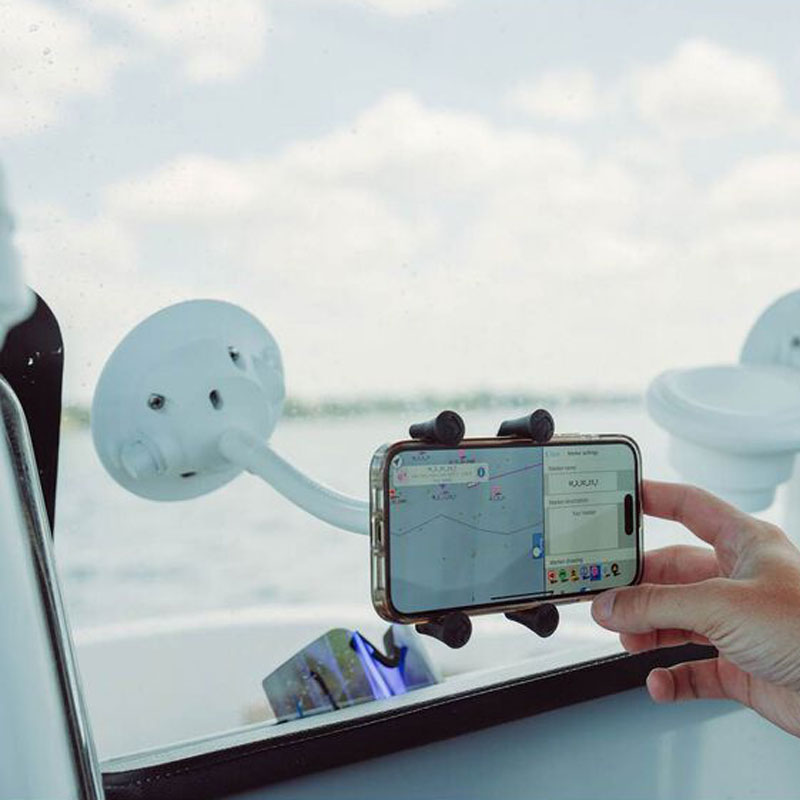
SeaSucker Flex-X Cell Phone Mount
Trending now: custom nautical decor for your boat life.
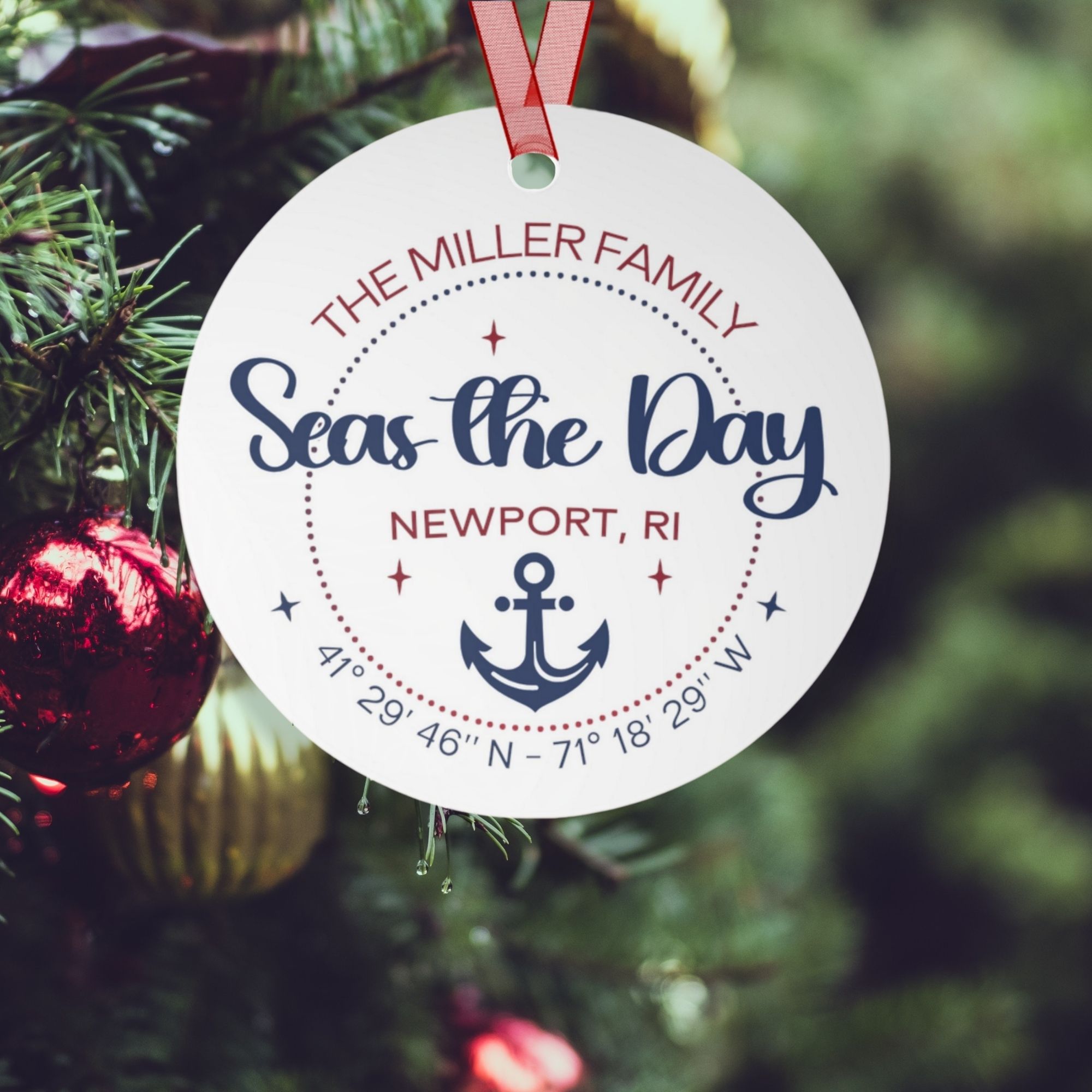
Custom Boat & Family Names Ornament with Coordinates – Metal
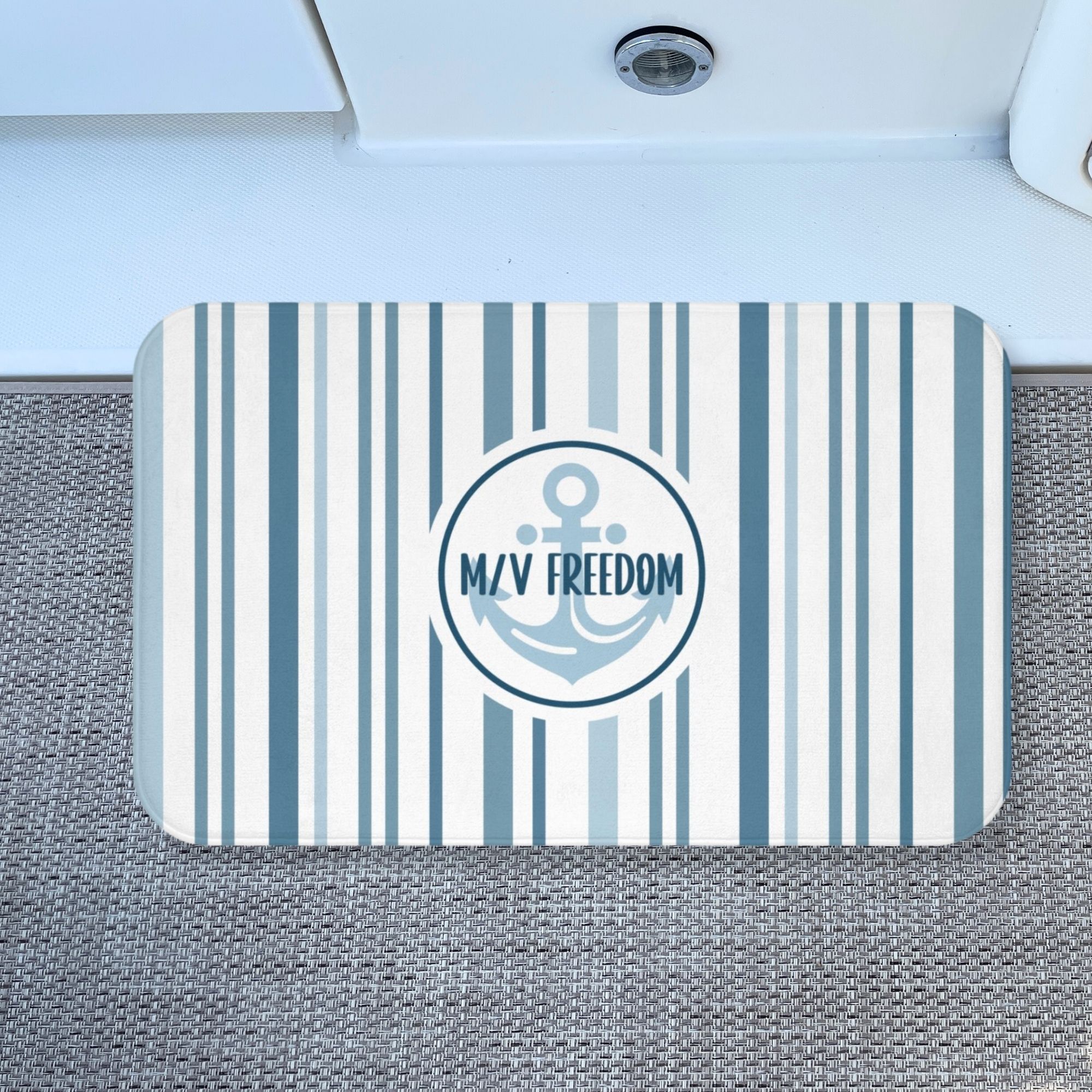
Coastal Blue Stripes Bathmat with Anchor & Boat Name
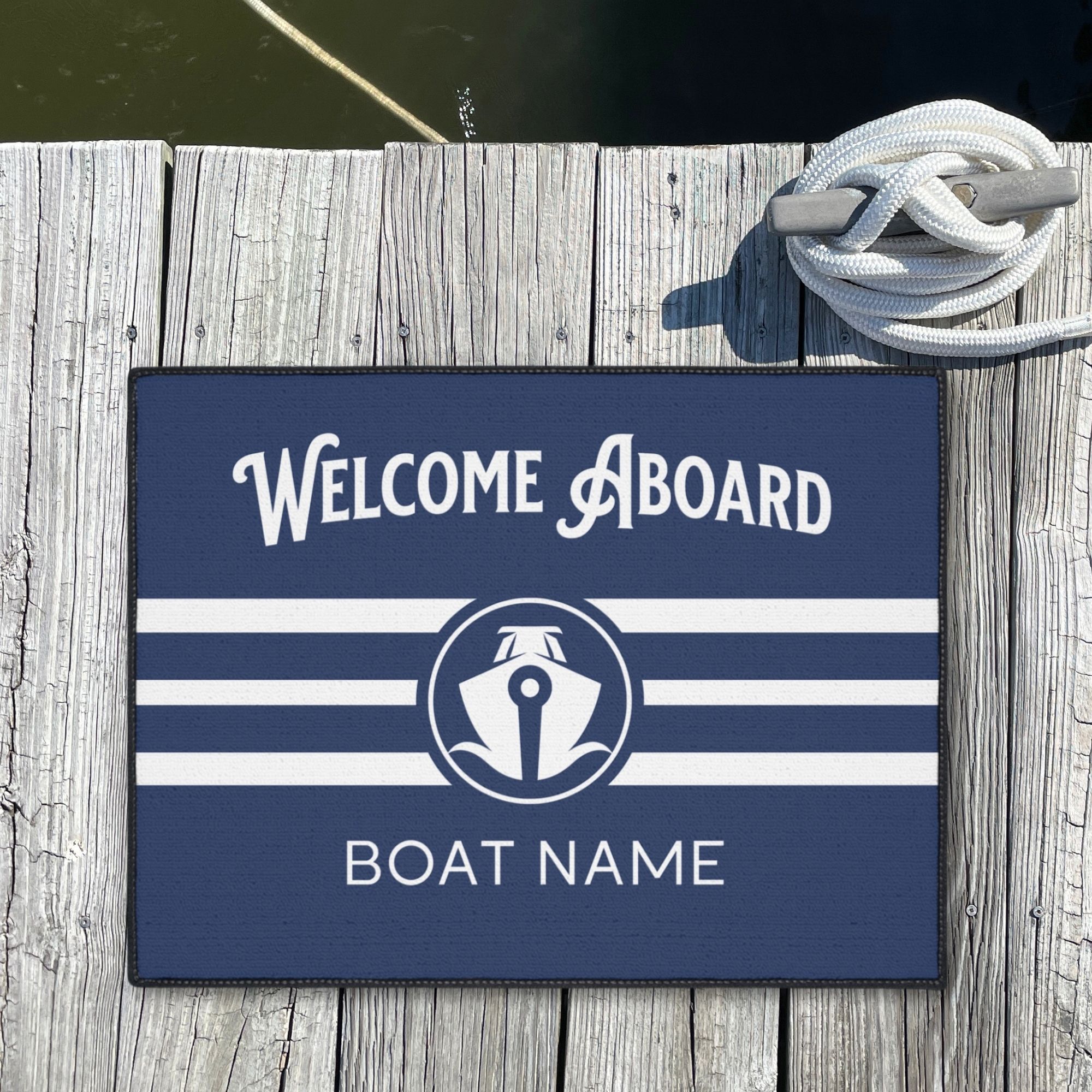
Welcome Aboard Boat Mat with Custom Boat Name
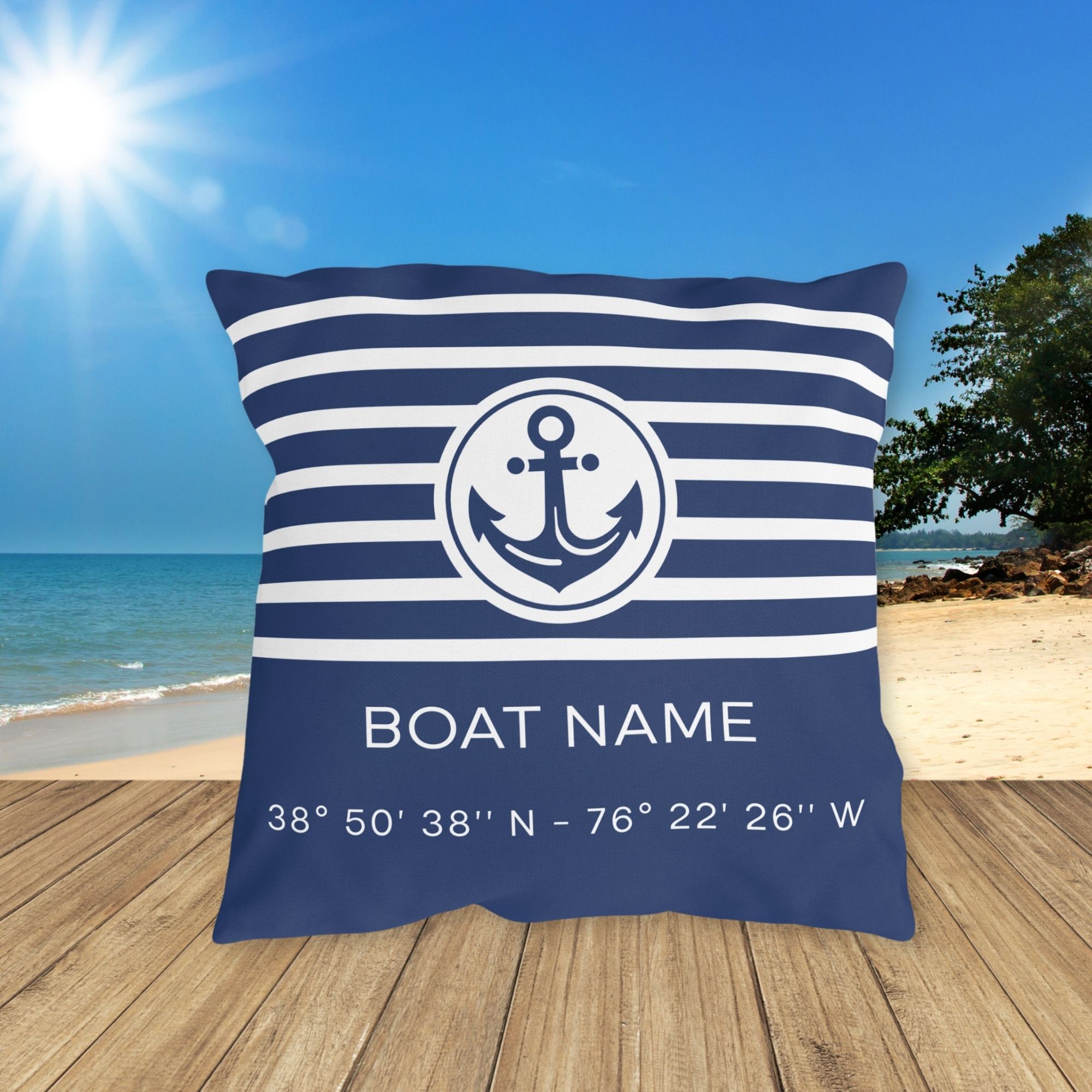
Boat Pillow with Boat Name & LAT LONG Coordinates

Capt. Rob Chichester
Related posts.
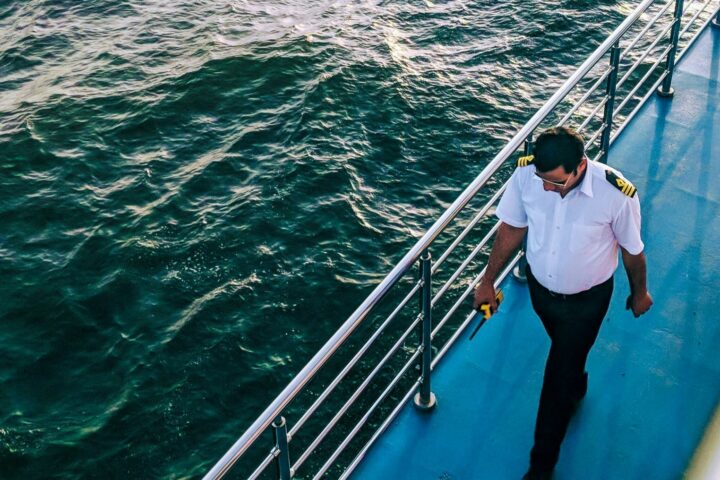
Career Opportunities for Boating Enthusiasts from Jooble Job Search Aggregator
August 7, 2024
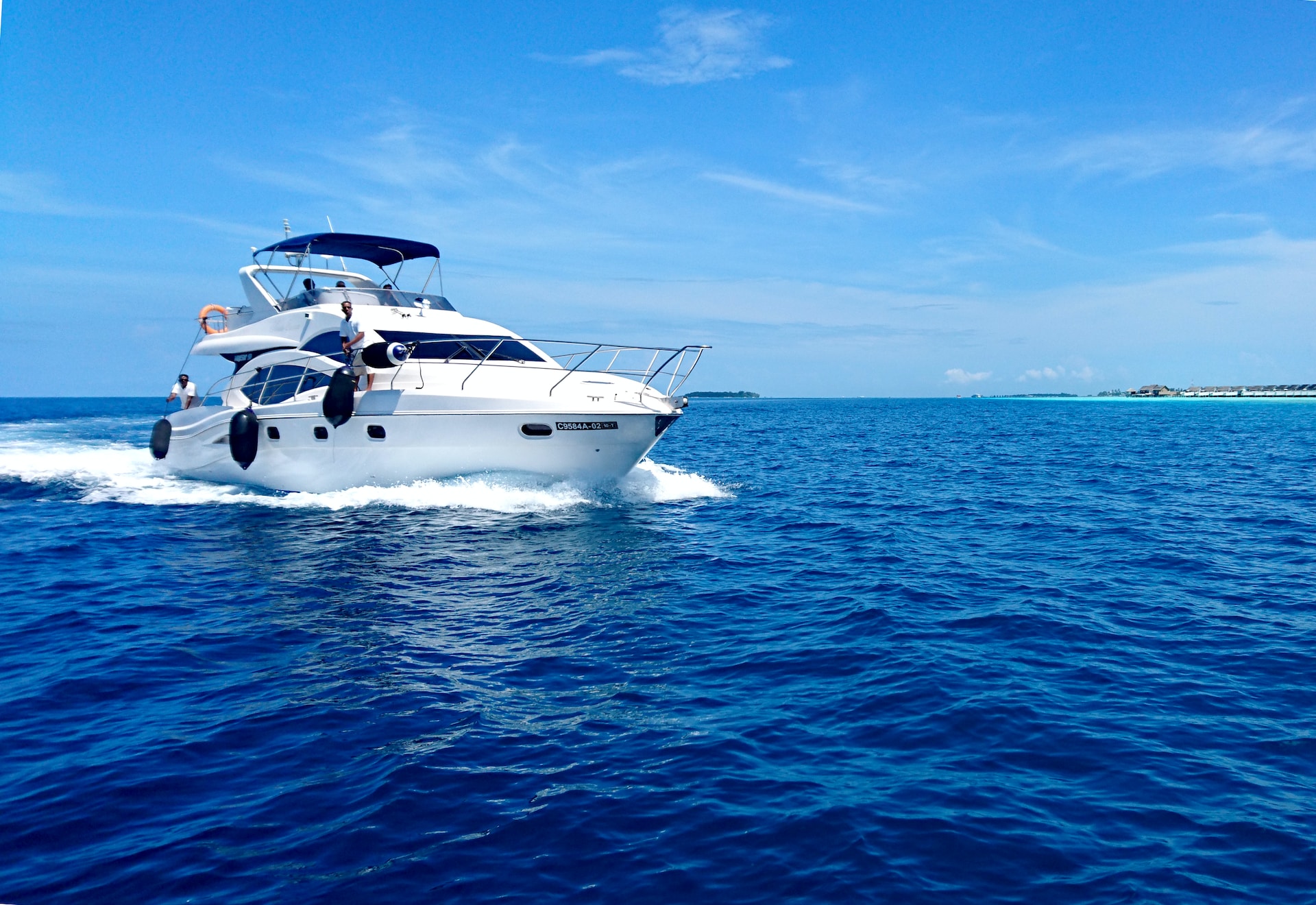
Can I Drive My Yacht Anywhere In The World?
May 11, 2023
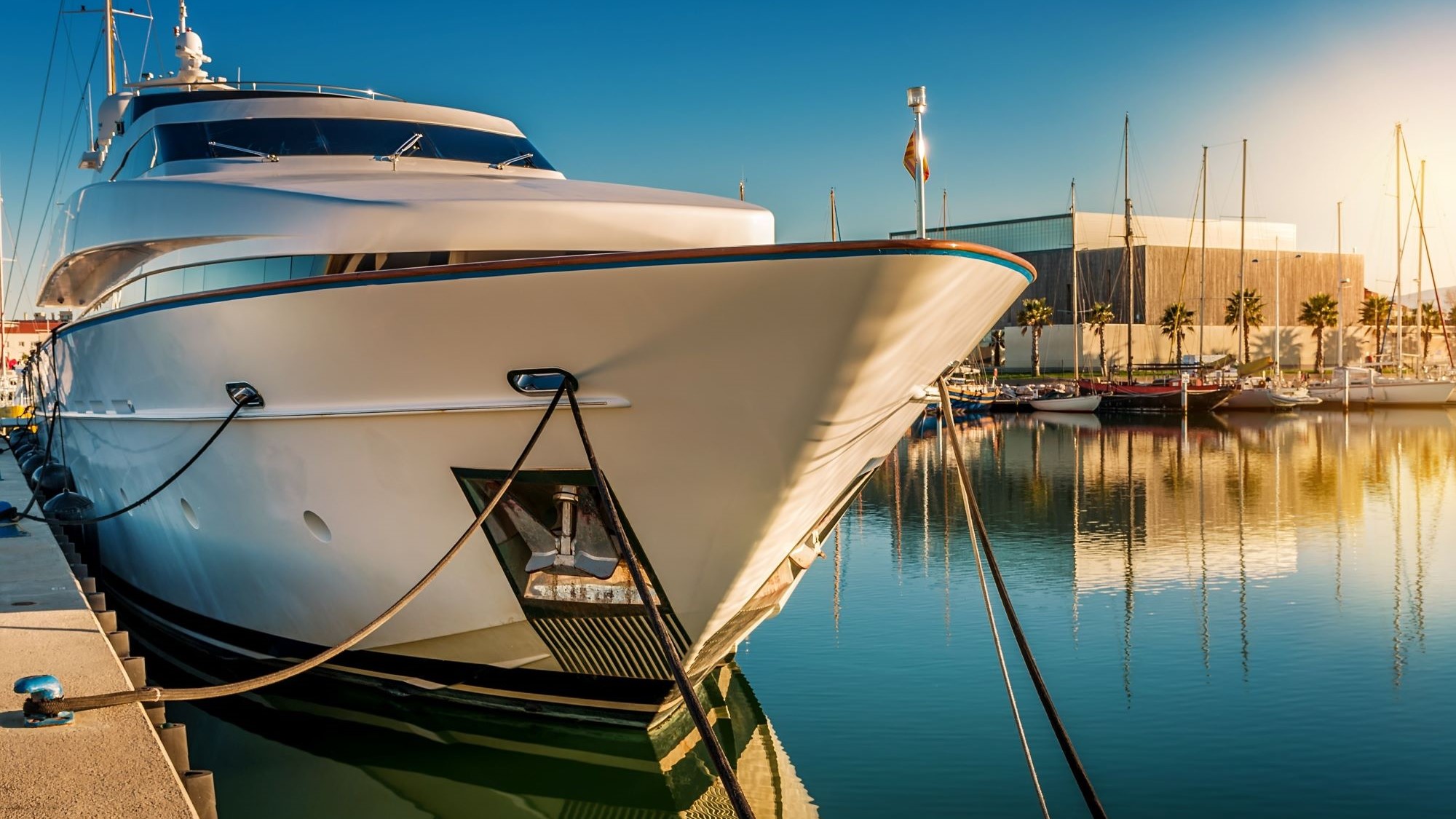
How To Transport A Yacht Safely
April 7, 2023
24 Comments
Hi, I am hoping you can help me out. I am a USCG vet that was stationed at a small boat station in NJ from 1983-1989. I am trying to get my sea time documented but I am having a very hard time finding out how to do that since the station records were not computerized at that time. I have contacted the NMC and they told me to call the station to get an Abstract of Operations report. They just laughed at me when I called the station. I have requested info from vetrecs.archives.gov but I am sure that will take some time just to get an answer as to wether they can do that or not. I was wondering if you knew how to go about getting the information that I need. I am sure I am not the only person with this issue and I can’t seem to find anyone that knows exactly how to go about documenting that time.
Thanks Jeff

Thanks for your question. I don’t have a lot of advice for you regarding USCG internal procedures. Perhaps you can contact the Office of Personnel and try to get a copy of your service record. Alternatively, is there anyone at that small boat station who knew you? Would the OIC be willing to write a letter? The last and least likely option would be to fill out your own sea service form and see if anyone there would sign off on it for you. Now the regulations speak of a Certificate of Discharge being acceptable. See for example 46 CFR 10.232 ( https://www.law.cornell.edu/cfr/text/46/10.232 ). If you already have that, you might be good to go!
So…start with your Certificate of Discharge and if you don’t have that, then contact the Office of Personnel to see if you can get the requisite documents. Let me know how you make out!
Hi Captain Rob, My name is Elton the 66 year old owner of a small 35 ft. Kingscraft houseboat. I spend a lot of time on one large lake. It is an older wonderful all aluminum vessel but weighs only about 8000 lbs. In the chart the lowest weight rating is 17 tons. I would love to educate myself and become a Captain. Is that possible at some level? I would also have to document my own time as pilot.
Sir, you have open to you both options that I describe in my article. You could pursue either a Master’s license OR an Operator of an Uninspected Vessels license. From what you have written, I see no inherent obstacles. You must be able to document your seatime, get a medical evaluation, and pass the 4 or the 3 parts of the written exam depending on which license you choose to pursue. In any event, you would qualify for an Inland license. Your tonnage rating would also depend on which license you pursue. Solely based on what you have said above, you would qualify for a 50 ton Master’s license. If you pursue an OUPV, that comes with a tonnage rating of 100 tons. For most people, the biggest challenge is acceptably documenting seatime. (It needs all be as captain. You can include time served as master, mate, or crew but NOT as a paying passenger.) If your concern is your age, I know a few captain’s in the 60s and 70s. I am one of the former myself. Good luck!
Capt.Rob I am US Army Veteran And I was wondering if their was a school i could attend to obtain a licence, I ask this because i have to decide what i want to go to school for and this job would be a top pick for me. Any help on this matter would be greatly appreciated thanks
There are MANY captain schools that can help you with the written tests but there are NO schools that can help you with the sea time requirements unless you are considering enrolling in a maritime college like Kings Point or Fort Schuyler in the New York State university system. I used Mariners Learning System for my written tests only because it was more convenient than going to the USCG REC to take the exams.
Where would I get sea service forms . I have owned and operated my own boats for over 30 years and am now being asked to get a captains liscence
There is a link in the article for the National Maritime Center. All the forms you needs can be found on their website. Alternatively, you can search for USCG National Maritime Center with your favorite search engine.
Couple questions. Would working as a divemaster on a dive boat in the Gulf of Mexico count for near coastal sea time? And if you were to have 8 hours of sea time in one day, could you potentially count that as two days at sea? Or would it still be just one day? Thanks for all the info this has been a huge help!
Any time spent aboard a vessel underway counts as long as the owner, manager, or master of the vessel will attest to that. When submitting Sea Service forms, your option for your role aboard the vessel are things like crew, mate, master, engineer, etc. You will need to determine what your position was. Divemaster is not recognized and does not speak to maritime skills necessarily. (For example, you can dive from shore never having been in a boat.) Regarding the near coastal time, you just need to verify that the vessel upon which you served was indeed in near-coastal or ocean waters. The form has spaces for days spent within the specified boundaries and outside those boundaries. I once saw an interactive chart online for finding the boundary lines in a given area. For your purposes, you cannot count 8 hours as two days underway. You need a MINIMUM of 4 hours underway to count that day. Being at anchor or otherwise moored or secured does not count. Good luck!
Capt. Lots of good and helpful info. I boated the Chesapeake for 10+yrs, from the Delaware bay to Virginia in a 27′ cruiser. i’ve not been on the water since 2012. So to be clear, I need to acquire some time on a charter vessel to even attempt the basic “6-pack”. I have my CG boating skills and seamanship certificates,and will work on the CG719S. Living in Florida, lots of opportunity, should have done this sooner !! Thanks
Thank you for your feedback. I am glad you found the article helpful. Apart from documenting your sea time, I found the most labor intensive aspect was verifying that a) I had all the documents that I needed and b) I had correctly completely all of the USCG forms. A lesser challenge may be in determining what correct application fees are. If you are not sure, contact USCG NMC by phone, email, or online chat to get clarification on what fees you have to pay. Good luck!
This is great info..
I am starting out (hopefully) as a plan is due to new lifestyle i desire to get an two oceans open ocean 800 expedition catamaran (again very expensive so fingers crossed) but the plan is while the vessel is being built, i can take several classes and get a few certifications prior to launch, then as life you see everywhere on youtube for example have the vessel at dock, then day trips, then a week trip and just push it a little further until you are ready for the maiden voyage, really looking to live off anchorage in around the philippines / guam area mostly philippines or south pacific area, mostly friends and family but my question is any licence for that type of boat, and also if you have heard of any schools in the philippines? I know they have a few courses that are completely certified like any american school but a fraction of the cost, just curious if any particular licence i need to get or have?
You did not say whether you intended to take passengers for hire. Generally, one only needs to be licensed if you are getting paid to carry passengers OR if you working in more advanced maritime fields like tug boats and large cargo vessels. If you are only operating your private vessel for your own personal or recreational purposes, you usually do not need any kind of license other than possibly taking a multiple choice test on local safety rules and rules of the road. I am not familiar with the licensing requirements in foreign venues like the Philippines. Each nation has its own requirements. I was able to find information at this link: http://www.marina.gov.ph/policies/MCs/mc170.pdf . You may find some useful information in that document.
Good luck! And safe sailing…
Your information was helpful, thank you. I have decided to pursue getting my License but I am starting from scratch. Should I take classes before looking to get sea time? And how does one go about getting sea time with no experience?
Any course work you take will typically culminate in a certificate of completion. However that certificate will only be valid for 1 year. Therefore, do NOT take any exams more than about 6 months prior to submitting your original license application. As for sea time, you can look for marine work that does not require a license like deck crew on water taxis or excursion boats. Time spent on a friend’s boat counts. Have that friend complete and sign a sea service form. Sea time never expires and can be counted from the age of 15. Learn your rules of the road and learn to feel your vessel. Driving a boat is a lot different from driving a car. As a licensed captain, you are expected to step up to the helm and handle the ship with relatively little training time. Good luck!
Great article, thanks for writing it! Does time spent aboard a recreational boat that I own, when I am the only person aboard, count towards sea time? If so how do I document that – there’s no one to sign for the time. Thanks again.
Time spent on your own boat absolutely counts. You would sign the CG-719S Sea Service form yourself where it says Applicant AND where it says Person Attesting to Experience. However, you will have to provide proof of ownership for the vessel. The Bill of Sale is usually what is used but the vessel’s CG document or state registration card should also be sufficient. Remember that seatime is counted only from the age of 15 and it is underway time of at least 4 hours per day. Time on the anchor or alongside do NOT count. The presence of others is irrelevant.
Hi Shane. Sea time is defined as time working aboard in any capacity relevant to the rating you are pursuing. For instance, if you are a bos’n or deck crew, that time it unlikely to count towards a engineer’s license and conversely, time in the engine department or work on mechanical systems would be difficult to apply towards a deck officer’s license. The highest rating one can get on an original (i.e., first) license is 100 Ton Master. It is likely that your Navy time would count; however, your challenge is getting an appropriate service letter from the Navy. You cannot submit a CG-719S for your Navy service as that form is for SMALL VESSEL service. Consult the USCG site at http://www.uscg.mil/nmc for more information. Also note that you may use any valid sea time accrued from the age of 15. Good luck!
Hi Capt. Rob, I have one question rather just some clarification regarding the time at sea, for the tonnage rating. Does “time at sea” mean just that or does it mean operating the vessel. I was in the Navy for several years as an operations specialist and I am not sure what level I would qualify for if I were to pursue getting a Captains license. Also I was wondering how much the entire process would cost.
Hey Rob, Thanks so much for taking the time to write this, it was really very useful to read. This has been on my mind for some considerable time, but I am now finally starting on the road to getting my licence and taking a nautical shift in my career. I have been a sailor all my life, was sailing single handed as soon as I could walk and now own a 38 foot Irwin racer/crusier.
My one big question is online study vs going somewhere to do the required course? I wonder how you gained your licence and what you might recommend?
My issue was primarily NOT wanting to have to take the tests at the NYC REC and to NOT attend intense 8-10 hour weekend classes. I was comfortable with the Rules of the Road and chart navigation issues as well the Deck General material. Since I got a Master’s license (versus the OUPV), there was more legal stuff to know in the category they call Ship’s Business. I did an online course through Mariner’s School in Princeton, NJ. The price was good and the location was convenient for when I did go to take the test.
The bottom line is do what works best for you given what you need to learn or refresh, how much time you have to do it, and where you will need to go to take the final tests.
(Please note that you can submit your application and/or take your tests at ANY REC anywhere. It is not a function of where you live or where you will sail.)
Great article Rob. Thanks for sharing your experience
Thank you for the feedback. Do please let me know if you have any further questions or if I may be of service in some other regard!
Comments are closed.
BIG LABOR DAY SALE!! Save on essential boating gear with some of the lowest prices of the season West Marine's Labor Day Sale valid Aug. 22 - Sept. 2

- Mariners Learning System - User Guide
- Online Learning
- Online Testing
- Captain's Licenses
- FCC Licenses
- Student Account (Course Locker)
- Other Helpful Articles
- Course Locker Login
- General Questions
- General Requirements
- OUPV/Six-Pack
- 25/50 or 100 Ton Masters
- OUPV/Six-Pack Upgrade to 25/50 or 100 Ton Masters
- Assistance Towing Endorsement
- Auxiliary Sailing Endorsement
- Deck License Renewal
- Captain's Licenses - Application
- Overview on FCC Licenses
- Types of FCC Licenses
- FCC Licenses - Application
- Contact Information
- Help Center
- Captain's Licenses - General
What's a USCG Captain's License & Merchant Mariner Credential?
Exploring the significance and benefits of a uscg captain's license.
What is a USCG Captain's License?
A USCG Captain's License, also known as a Merchant Mariner Credential (MMC), is a certification issued by the United States Coast Guard (USCG) that grants individuals the authority to operate vessels for commercial purposes or carry passengers for hire. It is a nationally recognized credential that demonstrates the holder's competency and qualifications to assume command and responsibility of a vessel.
What types of vessels and operations does a USCG Captain's License cover?
The USCG Captain's License is not limited to a specific type or size of the vessel. It applies to various maritime operations, including commercial fishing, charter boat services, tour and excursion boats, ferry operations, and more. An MMC signifies that the license holder has met the training, experience, and medical requirements established by the USCG to ensure the safety and professionalism of the maritime industry.
What are the eligibility criteria for obtaining a USCG Captain's License?
Obtaining a USCG Captain's License requires meeting specific eligibility criteria, including minimum age requirements, sea service experience, physical fitness standards, and passing a comprehensive examination. The license is categorized based on the type and tonnage of the vessels one is qualified to operate, such as Operator of Uninspected Passenger Vessels (OUPV) or Master licenses.
What are the benefits of holding a USCG Captain's License?
Having a USCG Captain's License offers numerous benefits and opportunities. It opens doors to various career paths in the maritime industry, including working as a boat captain, yacht captain, fishing boat operator, or charter boat operator. It allows license holders to legally conduct commercial operations, ensure the safety of passengers and crew, and provide professional services in compliance with USCG regulations.
What does a USCG Captain's License reflect about a captain?
The USCG Captain's License is a prestigious credential that reflects a captain's knowledge, skills, and commitment to maritime safety. It requires theoretical knowledge, practical experience, and a strong understanding of navigational rules, vessel handling, emergency procedures, and other essential aspects of safe and responsible boat operation.
Are there variations in the USCG Captain's License, and what regulations govern its issuance?
It's important to note that the requirements and processes for obtaining a USCG Captain's License may vary based on the specific Merchant Mariner Credential and the level of certification sought. Aspiring captains should consult the USCG and relevant authorities for the most accurate and up-to-date information to ensure compliance with the regulations and to pursue their captaincy aspirations.

- Home /
- Blog /
- Captain License
- / USCG Captain’s License: Ultimate Guide
USCG Captain’s License: Ultimate Guide
When do you need a captain’s license.
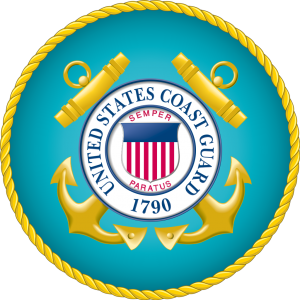
Sometimes, maritime training instructors also need a captain’s license. Another reason you might need a captain’s license is for insurance purposes. Some insurance companies require that the boat has a licensed captain onboard, while others offer discounted rates.
To carry up to six paying passengers on a vessel of up to 100 gross tons you need an Operator of Uninspected Passenger Vessels (OUPV) Captain License – also called a six-pack captain’s license. The 6-pack captain’s license requirements include that you are at least 18 years old. You do not have to be a U.S. citizen, but you have to provide proof of permanent U.S. residency.
If you are intending to carry more than six paying passengers you need a Master Captain’s License – the highest level captain’s license issued by the USCG. The master captain’s license requirements include that you are at least 19 years old and a U.S. citizen.
How to become a boat captain
1. captains license sea time requirements.
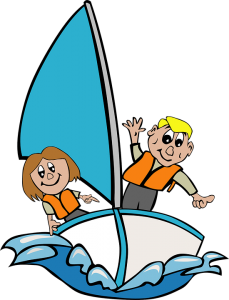
Sea service time can be counted from your 16 th birthday. It must be documented on the Small Vessel Sea Service Form , or detailed in a letter, and signed off by the owner/operator/master of the vessel on which you conducted the service. If you did your sea service on more than one vessel, a separate form must be used for each vessel. If you are the owner of the vessel you must present proof of ownership.
Eight hours underway (not moored or anchored) in a 24-hour period counts as one day of sea service on vessels over 100 gross tons. For vessels less than 100 gross tons, no less than four hours underway counts as a day. It is important to identify the waters (inland, great lakes or near coastal) that the vessel was operating on as this will determine the type of captain’s license you qualify for.
USCG captain’s licenses are issued to operate vessels either inland, on great lakes or near coastal. To become a boat captain on great lakes you need at least 90 days sea service time on great lakes. The sea service requirements for operating a vessel near the coast depends on whether you are applying for an OUPV Captain’s License or a Master Captain’s License .
The gross tons of the vessel is also important to document – especially when applying for a Master Captain’s License . Tonnage refers to the volume of the boat and not the weight. If the tonnage of the boat is unknown (check the vessel’s documentation), the length, width and depth can be filled in on the Small Vessel Sea Service Form in order for the USCG to calculate the tonnage. The registration/identification number of the vessel must also be provided or the USCG will not accept the sea service form.

You will be quizzed on the following sections:
- Rules of the Road (you need to correctly answer 90% of 30 questions)
- Navigation General (you need to correctly answer 70% of 30 questions)
- Chart Navigation (you need to correctly answer 70% of 10 questions)
- Deck General and Safety (you need to correctly answer 70% of 60 questions)
- For a master captain’s license : Master 25/50/100 Ton (you need to correctly answer 70% of 70 questions)
You can find up-to-date captain’s license practice test questions, released directly from the U.S. Coast Guard, at USCGQ.com .
3. Additional requirements
- Pass a physical
- Pass a drug test
- Obtain a CPR and basic first aid card
- Request a criminal background and driving record check by applying for a Transportation Workers Identification Credential (TWIC) card at the Department of Homeland Security.
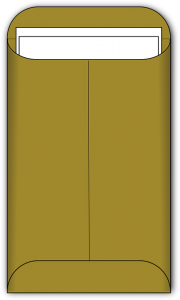
- Merchant Mariner Credential (MMC) Application Form ( CG-719B )
- Copy of Certificate of Training
- Copy of your CPR & First aid card (front and back)
- TWIC application receipt
- Conviction Disclosure Statement (if convicted of anything) ( CG-719C )
- Small Vessel Sea Service Form ( CG-719S )
- Medical Form ( CG-719K )
- DOT/USCG Drug Testing Form ( CG-719P )
- Receipt of payment (you can pay applicable fees at Pay.gov )
You must apply at your USCG regional exam center in person, by mail or electronically. Your application must be accompanied by photo identification.
How much does it cost to get a U.S. Coast Guard captain license?

You need to pay the USCG for the issuance of the Merchant Mariner Credential ($45) and for processing the license application ($100). If you are undertaking the examination at a USCG exam center (and not with an approved course provider) you also need to pay the examination fee ($95).
But it doesn’t end there. You need to pay the TWIC enrollment fee; for the physical exam and drug screening; and for First Aid/CPR Training.
A good tip is to submit your application to the USCG before enrolling in a course. Once the application is approved by the USCG, in terms of the required documentation, you will receive a notification indicating “Approval to Test (ATT)”. That way you can be sure your application will be approved before paying course tuition fees.
Also see USCG captain’s license renewal requirements, upgrade requirements and endorsements .
USCG License Upgrade
USCG License Renewal
USCG Captain’s License Endorsements
Merchant Mariner Credential (MMC)
USCG Master Captain’s License
USCG OUPV (Six-Pack) Captain’s License
Click Here to Leave a Comment Below
Leave a Comment:

- Find A School
- Certifications
- North U Sail Trim
- Inside Sailing with Peter Isler
- Docking Made Easy
- Study Quizzes
- Bite-sized Lessons
- Fun Quizzes
- Sailing Challenge
Want to get your USCG Captain’s License? Here’s how.
By: American Sailing Standards

There are many reasons, professional and personal, to get a United States Coast Guard Captain’s License. In many cases the recreational mariner doesn’t need a USCG license, but would like to have one to improve their sailing resume, cement their knowledge of maritime rules and regulations, and pave the way toward sailing professionally.
For sailing instructors, the USCG license can often be essential. While your ASA training and certification are what prepare you to be an excellent teacher of sailing, most instructors are also legally required to have USCG captain’s license. This is due to strict rules related to carrying passengers, skippering for hire, and the type of boat involved. We created a handy chart to help determine which instructors are required to have a USCG license. In short, if you receive any compensation, if the boat has auxiliary power, and if you’re operating in USCG waters, you MUST have a captain’s license.
Whatever the reason, if you’re interested in getting a license, how do you go about it?
The most common type of license is called the Operator of Uninspected Passenger Vessel (OUPV). This allows you to operate a vessel of 100 tons or less with as many as 6 paying passengers on board. For that reasons, it’s often referred to as the “6-pack license.”

“Knowledge” refers to the test you must take in order to get your license. Be warned: this test is no walk in the park. Serious study and preparation is needed to pass it, as it will test your knowledge of seamanship, rules and regulations, navigation, and more. Taking a course is highly recommended. Select ASA schools offer USCG classes in addition to ASA curriculum. Check with the schools in your area to see if they do – if not they may be able to make a recommendation, as their instructors probably have USCG licenses!
Getting your USCG captain’s license is not easy, but if you achieve it, along with ASA certification, you will be part of an elite group of sailors with the experience and training to get the most out of the sailing lifestyle. Best of all, everyone will have to call you captain!
Related Posts:

- Learn To Sail
- Mobile Apps
- Online Courses
- Upcoming Courses
- Sailor Resources
- ASA Log Book
- Bite Sized Lessons
- Knots Made Easy
- Catamaran Challenge
- Sailing Vacations
- Sailing Cruises
- Charter Resources
- International Proficiency Certificate
- Find A Charter
- All Articles
- Sailing Tips
- Sailing Terms
- Destinations
- Environmental
- Initiatives
- Instructor Resources
- Become An Instructor
- Become An ASA School
- Member / Instructor Login
- Affiliate Login

U.S. Coast Guard Approved
Maritime training school, "we hold your hand till' it holds a license", in-person classroom.
Come to one of our many locations to get certified
Online Courses
Get certified at your own pace with our online system
Distance Learning
Want to be at home but still have instructor help? Try a distance learning course
Latest news

Set Sail for Adventure: Earn Your OUPV Captain’s License in the Keys
We are thrilled to announce a unique opportunity to earn your OUPV ‘6-pack’ Captain’s License in one of the most beautiful and historic locations in the Florida Keys. From October 5th through October 10th, Sea School is partnering with the Boy Scouts of America’s Florida National High Adventure Sea Base in Islamorada to offer an […]

STCW is coming to Panama City!
Sea School to Offer Maritime Institute of Technology’s STCW Basic Training in Panama City Panama City, [7/10/24] — Sea School is excited to announce that Maritime Institute of Technology’s STCW Basic Training courses will now be offered under the Sea School name in Panama City. Starting in late August, mariners can enroll in the STCW Basic […]

Simplify Your USCG License Application Submission with Sea School’s New Online Portal
Navigating the complexities of the U.S. Coast Guard (USCG) licensing process just got a whole lot easier! At Sea School, we are excited to announce the launch of our new online submission portal, designed to streamline the collection, review, and submission of your documents for a USCG license. No more back and forth – our […]
We have been in business for over 47 years with convenient locations along the Eastern Seaboard, Gulf Coast and the Caribbean.
Merchant mariner applications.
Are you looking to start your Merchant Mariner Application process? Sea School can help you through the process.
get in touch
Write to us, our courses.
Able Seaman
Active Shooter Response Training
Advanced Firefighting Revalidation
Apprentice Mate Steersman
Apprentice Mate Steersman – 2 Day Upgrade
Assist Towing
Assist Towing – Distance Learning
Auxiliary Sail
Auxiliary Sail – Distance Learning
Auxiliary Sail – Online
Basic & Advanced Firefighting Combination
Basic Firefighting
Bridge Resource Management
Flash Light Tutoring
Inland to Western River Routes for Towing Vessels
Launch Tender – Distance Learning
Launch Tender – Limited Master
Leadership and Managerial Skills
License Renewal (No More Than 200 GRT)
License Renewal (No More Than 200 GRT) – Online
OUPV – Captain’s License – Distance Learning
PSC – Proficiency In Survival Craft
PSC – Proficiency In Survival Craft – Refresher
QMED – Oiler
Radar Inland
Radar Observer Endorsement
Radar Observer Recertification
Ratings Forming Part of a Navigation Watch (RFPNW)
Rules of the Road
Tankerman Barge – PIC
Maritime Security Awareness
Maritime Security Awareness With Security Duties
Master / Mate 25-100 GRT
Master / Mate 25-100 GRT – Distance Learning
Master / Mate Upgrade 200 GRT / 500 GT
Visual Communication Flashing Light
Western to Inland Rivers Routes for Towing Vessels
STCW Basic Training
STCW Basic Training – Renewal
STCW Basic Training – Revalidation
Son of a Seacook – Cooking School
CPR and First Aid
Captain’s License – OUPV
Captain’s License – Online (OUPV)
Crisis Management and Human Behavior
Crowd Management

Boat Captain License
Uscg approved captains course oupv (6-pack) and 100 ton captain.
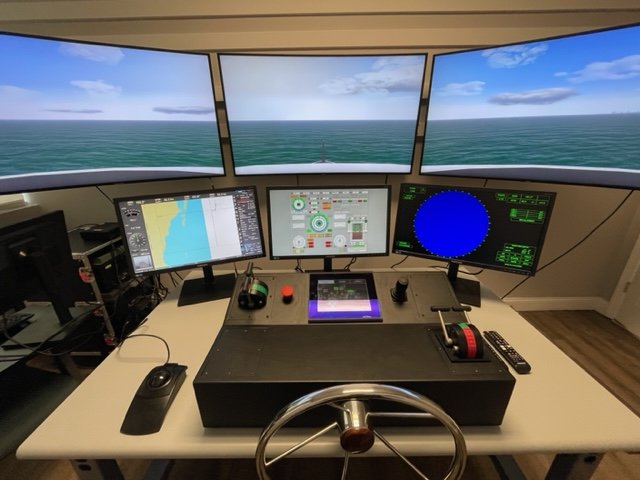
Seven Seas Prep - Boat Captains Course
Our course provides you with the following endorsements, depending on vessel size and sea service (refer to the NMC USCG Checklists).
- Master of vessels of less than 100 GRT (Near coastal, or Great Lakes & Inland or Inland Waters)
- Operator of uninspected Passenger Vessels (OUPV) (Near Coastal, or Great Lakes & Inland, or Inland Waters).
Gain the essential skills and knowledge needed to command vessels with confidence. Our USCG-approved courses cover navigation, safety, and seamanship, preparing you for success on the open water. Whether you're aiming for a 6-Pack License or aspiring to captain on vessels up to 100 tons, our comprehensive training programs set the course for your maritime ambitions. Join the ranks of skilled mariners who have turned their passion for the sea into a fulfilling career. Ready to chart a course for success? Enroll today and let your maritime dreams set sail!
Course delivery
- Online Courses
- 3 Days in person for practical training and preparation, concluding with required examinations.
The USCG does not require you to get a Six-Pack license before you obtain your 25/50 or 100Ton license. If you qualify, you can take the course and examination to obtain your Captain's license. You will satisfy the examination requirements of 46 CFR 11.201 & 11.301 by presenting your certificate within one year of course completion.
Subjects include:
Ship handling
Maritime Law
Emergency procedures
Vessel construction and design
Training on our professional ship simulator
Examinations
The 3-day course includes the four examinations covering, collision regulations, deck safety, deck general, navigation general and chartwork. No tests at the Coast Guard required.
Note: A course certificate may be used for one application for the issuance of an endorsement and may not be used for any applications thereafter.
Official websites use .mil
Secure .mil websites use HTTPS
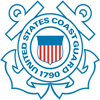
NATIONAL MARITIME CENTER
Do not complete the form in the web browser..
- Save the document to your desktop with your Last Name, First Name, Mariner reference number (if applicable)
- Complete the form in Adobe PDF application .
CG-719B pdf How to Complete the CG-719B Application Video Guide
CG-719k pdf How to Complete the CG-719K Application Video Guide
CG-719K/E pdf
CG-719C pdf
CG-719S pdf
CG-719P pdf
Alert! Leaving National Maritime Center
Warning: Homeport recommends using Microsoft Edge. Unsupported browsers; such as Chrome, Firefox or Safari, may erroneously say credentials are invalid or display an incompatibility warning. If this happens please contact the NMC via chat, email or phone.
Do you want to proceed to Homeport Application Status?
Do you want to proceed to Homeport Credential Verification?
Do you want to proceed to Homeport NMERPAC?
Do you want to proceed to NMEDMAC?
Do you want to proceed to NOSAC?
Do you want to proceed to Sea Service Renewal Calculator?
Do you want to proceed to Homeport Print Certificate for Display Only?
- ABOUT us / Employment Opportunities
- Start with a CHECKLIST
- Apply for a Merchant Mariner Credential
- Apply for a Medical Certificate
- make a payment
- REC: Schedule Exam(s) or Submit Your App
- Check your application status
- Examinations
- Course Provider / DE / QA Info
- Forms & instructions
- Get your records
- Policy & Regulations
- additional resources
How did we do? Let us know below.
Website Feedback
Program Survey
Application Acceptance Checklist
Application Status
How to Complete the CG-719B Application Video Guide
How to Obtain an MMC
Mariner Oath
Print Certificate for Display Only
Sample Third Party Authorization Form (Merchant Mariner Credential)
How to Apply for a Merchant Mariner Credential (MMC)
Step 1: TWIC
Step 2: Submit Complete Application
Step 3: Transit from REC to NMC
Step 4: Application Evaluated
Step 5: Credential Printed
Step 6: Credential Mailed
How to video
Fullscreen Video Guide to Filling Out Application Form CG-719B
Need to submit an MMC application?
*NOTE: If you have a First-Class Pilotage or Local Limited Merchant Mariner Credential application, submit to your local Regional Examination Center responsible for the routes requested. ALL other Merchant Mariner Credential applications, submit directly to NMC by clicking the below button. Please send any documents in Adobe PDF format only , and include your Last Name, First Name, Mariner Reference Number (or last digits of your SSN) in the subject line of your e-mail .
Submit to NMC
Need to send additional information (AI) for an EXISTING MMC application?
Submit MMC AI
Raise of Grade
Modification.
Original MMC definition: The first credential issued to an applicant.
Steps to Apply for an Original MMC
- Step 1. Determine the Officer and/or Ratings that you wish to obtain by visiting the NMC’s Checklist Page . Specific requirements can be found on the checklists. Then come back to this page.
- Step 2. Obtain a Transportation Worker’s Identification Credential. Be sure to list your occupation as a Merchant Mariner. Make photocopy of TWIC or copy of the TWIC application receipt.
- Step 3. Fill out a CG-719B Application for Merchant Mariner Credential.
- Step 4. (IF APPLICABLE) Fill out a CG-719C Conviction Statement.
- Step 5. Fill out a CG-719K Application for Medical Certificate or CG-719K/E Application for Medical Certificate for Entry Level Ratings.
- Step 6. (OPTIONAL) 3rd Party Release: Can be listed on Page 5 of the CG-719B , Page 10 of the CG-719K , Page 5 of the CG-719K/E and/or on an alternate form.
- Step 7. Obtain Drug Testing using a CG-719P Periodic Drug Testing Form or options listed on Page 2.
- Step 8. Pay user fees at https://www.pay.gov (preferred payment method). Print a copy of your payment receipt to send with your application package.
- Step 9. (IF APPLICABLE) Fill out CG-719S Sea Service or obtain other documented sea service.
- Step 10. (IF APPLICABLE) Obtain relevant Training Course Certificate(s) and/or Assessment(s). Make photocopies of all course completion certificates and/or completed assessments.
- Step 11. If you have a First-Class Pilotage or Local Limited Merchant Mariner Credential application , submit all your forms and supporting documentation to the local Regional Exam Center responsible for the routes requested. ALL other Merchant Mariner Credential applications, submit all your forms and supporting documentation directly to NMC at: [email protected] .
- Step 12. (OPTIONAL) If you wish to receive your credential via a method that can be tracked and will reach you in a few days, consider using an expedited mailing option .
Renewal MMC definition: The re-issuance of a current MMC or previously held credential with a new five-year expiration date.
Steps to Apply for a Renewal MMC
- Step 1. Go to the NMC’s Checklist Page . Click on the Renewal/Entry/Duplicate tab. See the National Renewal Checklist and/or the STCW-Renewal “Includes Original Basic Training” Checklist for specific requirements. Then come back to this page.
- Step 2. Make a photocopy of your Transportation Worker’s Identification Credential , or photocopy your TWIC application receipt, or indicate that you qualify for a TWIC exemption by completing Section III.1. on the CG-719B.
- Step 4. (IF APPLICABLE) Fill out a CG-719C Conviction Statement. List all convictions not previously reported to the Coast Guard.
- Step 5. Must already hold a valid Medical Certificate OR you must fill out a CG-719K Application for Medical Certificate or CG-719K/E Application for Medical Certificate for Entry Level Ratings.
- Step 7. Obtain Drug Testing using a CG-719P Periodic Drug Testing Form or options listed on Page 2.
- Step 8. Pay user fees at https://www.pay.gov . Print a copy of your payment receipt to send with your application package.
- Step 9. (IF APPLICABLE) Fill out CG-719S Sea Service or obtain other documented sea service.
Raise of Grade MMC definition: Increasing the level of authority and responsibility associated with a credential.
If you have questions on the difference between Raise of Grade and Modification, please contact us .
Steps to Apply for a Raise of Grade MMC
- Step 5. Must already hold a valid Medical Certificate OR you must fill out a CG-719K Application for Medical Certificate .
- Step 6. (OPTIONAL) 3rd Party Release: Can be listed on Page 5 of the CG-719B , Page 10 of the CG-719K , and/or on an alternate form.
- Step 7. Obtain Drug Testing using a CG-719P Periodic Drug Testing Form or options listed on Page 2.
- Step 10. (IF APPLICABLE) Obtain relevant Training Course Certificate(s) and/or Assessment(s) . Make photocopies of all course completion certificates and/or completed assessments.
Modification MMC definition: Also known as an Increase of Scope, this is defined as removing limitations previously placed on the credential such as change in horsepower, tonnage limitations, or geographic route.
Steps to Apply for a Modification MMC
- Step 2. Make a photocopy of your Transportation Worker’s Identification Credential , or photocopy your TWIC application receipt, or indicate that you qualify for a TWIC exemption by completing Section III.1. on the CG-719B .
- Step 4. (IF APPLICABLE) Fill out a CG-719C Conviction Statement . List all convictions not previously reported to the Coast Guard.
- Step 5. Must already hold a valid Medical Certificate OR you must fill out a CG-719K Application for Medical Certificate.
- Step 6. (OPTIONAL) 3rd Party Release: Can be listed on Page 5 of the CG-719B , Page 10 of the CG-719K , and/or on an alternate form.
- Step 7. Pay user fees at https://www.pay.gov (preferred payment method). Print a copy of your payment receipt to send with your application package.
- Step 8. (IF APPLICABLE) Fill out CG-719S Sea Service or obtain other documented sea service.
- Step 9. (IF APPLICABLE) Obtain relevant Training Course Certificate(s) and/or Assessment(s). Make photocopies of all course completion certificates and/or completed assessments.
- Step 10. If you have a First-Class Pilotage or Local Limited Merchant Mariner Credential application , submit all your forms and supporting documentation to the local Regional Exam Center responsible for the routes requested. ALL other Merchant Mariner Credential applications, submit all your forms and supporting documentation directly to NMC at: [email protected] .
- Step 11. (OPTIONAL) If you wish to receive your credential via a method that can be tracked and will reach you in a few days, consider using an expedited mailing option .
Duplicate MMC definition: A replacement credential issued containing the same authority, wording, and expiration date as the lost or destroyed credential.
Steps to Apply for a Duplicate MMC
- Step 1. Go to the NMC’s Checklist Page . Click on the Renewal/Entry/Duplicate tab. See the Duplicate Checklist for specific requirements. Then come back to this page.
- Step 4. (IF APPLICABLE) Fill out a CG-719C Conviction Statement. List all convictions not previously reported to the Coast Guard.
- Step 5. (IF APPLICABLE) If you need to request a Duplicate Medical Certificate, see Medical Certificates FAQ.
- Step 6. (OPTIONAL) 3rd Party Release: Can be listed on Page 5 of the CG-719B , and/or on an alternate form.
- Step 7. An affidavit with the EXACT wording and specific details are required to process a duplicate. See Sample Affidavit for Duplicate
- Step 8. Pay user fees at https://www.pay.gov (preferred payment method). Print a copy of your payment receipt to send with your application package. (Note: There is no fee to apply for STCW endorsements only.)
- Step 9. Submit all your forms and supporting documentation directly to NMC at: [email protected] .
- Step 10. (OPTIONAL) If you wish to receive your credential via a method that can be tracked and will reach you in a few days, consider using an expedited mailing option .
Document of Continuity definition: Documents issued solely to maintain an individual’s eligibility for renewal. The holder is not authorized to work under this document.

Steps to Apply for a Document of Continuity
Be sure to select the appropriate Document of Continuity box under Transaction Type in Section II on page 3. Specify which endorsement(s) you want to put into continuity in the Description box on page 3. If you want all of your credentials to be placed into continuity, write "ALL CREDENTIALS HELD".
YOU MUST SIGN Section IV on page 4 that you are attesting to the statement: "I understand that a Document of Continuity is not valid for use in accordance with 46 CFR 10.227 and aware of the requirements to obtain an MMC. STCW endorsements may not be placed in continuity per 46 CFR 10.227."
- Step 2. [email protected] .
- Step 3. (OPTIONAL) If you wish to receive your credential via a method that can be tracked and will reach you in a few days, consider using an expedited mailing option .
STCW MMC definition: An annotation on an MMC that allows a mariner to serve in those capacities listed in 46 CFR 10.109(d) and serves as evidence that a mariner has met the requirements of STCW.
Steps to Apply for an STCW MMC
- Step 2. Fill out a CG-719B Application for Merchant Mariner Credential .
- Step 3. (IF APPLICABLE) Fill out a CG-719C Conviction Statement . List all convictions not previously reported to the Coast Guard.
- Step 4. (OPTIONAL) 3rd Party Release: Can be listed on Page 5 of the CG-719B , and/or on an alternate form.
- Step 5. No fees are required for STCW only applications.
- Step 6. (IF APPLICABLE) Fill out CG-719S Sea Service or obtain other documented sea service.
- Step 7. (IF APPLICABLE) Obtain relevant Training Course Certificate(s) and/or Assessment(s). Make photocopies of all course completion certificates and/or completed assessments.
- Step 8. If you have a First-Class Pilotage or Local Limited Merchant Mariner Credential application , submit all your forms and supporting documentation to the local Regional Exam Center responsible for the routes requested. ALL other Merchant Mariner Credential applications, submit all your forms and supporting documentation directly to NMC at: [email protected] .
- Step 9. (OPTIONAL) If you wish to receive your credential via a method that can be tracked and will reach you in a few days, consider using an expedited mailing option .
Which USCG Captain's License Should You Choose?
OUPV or Master License? Your choice depends on vessel size and passenger count. Learn the requirements and how to upgrade later.
The first step you need to take to get your captain’s license is to decide which type of license you’re going to pursue.
There are two main types of Coast Guard licenses:
License Type #1 - 25 ton, 50 ton, or 100 ton Master License
License Type #2 - Operator of Uninspected Passenger Vessels (OUPV or Six Pack)
The type of license you choose depends on the size and type of vessel and the number of passengers aboard. You can always upgrade your captain’s license and add endorsements along the way.

OUPV/Six-Pack
The OUPV/Six-Pack license is the USCG license that many recreational boaters choose. It’s called the six-pack license because it allows you to take up to six paying passengers and crew members. This allows you to do small fishing trips, sightseeing tours, dive boats, or sail boats.
The OUPV license is also limited to vessels that are 100 gross tons (about 80 feet long).
Many boaters will get their OUPV license even if they have no intention of doing commercial boating. You don’t need to be licensed by the Coast Guard to use your personal boat, unless you’re taking paying customers out on the water.
Getting your license is still valuable because you’ll brush up on your navigation and safety skills. Plus, having your license gives you the option to captain in a commercial setting.
The OUPV qualifies you to captain uninspected vessels. USCG uninspected vessels can carry up to six passengers and aren’t required to be inspected by the Coast Guard. The uninspected vessel must comply with minimal federal standards for safety, navigation, and pollution prevention .
Inland, Great Lakes, and Near Coastal OUPV
There are three types of OUPV licenses that dictate the bodies of water you can operate on commercially.
The Inland OUPV license allows you to captain on U.S. Inland waters . This includes bays, rivers, and lakes (excluding the Great Lakes).
The Near Coastal license allows you to operate on Inland waters and Near Coastal, which is typically up to 100 miles offshore.
The third license type is Near Coastal with Great Lakes. This license allows you to operate on Inland, Near Coastal, and the Great Lakes .
OUPV license requirements
To qualify for your OUPV license, you’ll need to have 360 days of documented sea days. At least 90 of those days must be within the past 3 years. To attain the Great Lakes or Near Coastal license, you’ll need 90+ sea days on the respective waters.
The Small Vessel Sea Service Form CG-719S is used to record your sea days—the number of days that you were on the water (for 4+ hours in a day) in any given month and year.
Once you have the required sea time, you’ll need to:
- Be at least 18 years old
- Get your TWIC card
- Be a U.S. citizen (or show permanent residency)
- Have a valid First Aid/CPR Card
- Pass a basic physical exam
- Pass a drug test
- Complete a USCG-approved course
Read more about How to Get Your OUPV License
25/50/100 Master
The Master Captain’s License is required to captain any USCG inspected vessel, or vessels carrying 7 or more paying passengers. Larger tour boats, finishing boats, sailboats, and water taxis with more than 6 paying passengers on board require a Master License.
This license also allows you to captain uninspected vessels with fewer passengers. You don’t need to get a lower level license prior to this, or start at the lowest level. Your first license can be a 100 GT Master.
Similarly to the six-pack license, there are different Master licenses based on the size of the vessel, and the water you’re on.
To start, there are 25, 50, and 100-ton licenses. The 25-ton Master license qualifies you to captain vessels up to 25 tons. The 50-ton lets you captain 50-ton vessels. And the 100-ton lets you captain 100-ton vessels.
The license you qualify for depends on your documented sea days and the tonnage of the vessels you were serving on.
25 Ton Master = You have a minimum of 360 days on vessels less than 17 gross tons (GRT).
50 Ton Master = You have 180 days on vessels 26 GRT or larger, or 360 days on vessels 17 GRT or larger.
100 Ton Master = You have 180 days on vessels 51 GRT or larger, or 360 days on vessels 34 GRT or larger.
The Coast Guard will decide which license you’re qualified for based on your documented sea days on your license application. And if you get more sea time on larger vessels, you can always apply for an upgrade, so it’s best to focus on getting the license for the work you’re currently doing.
It only takes 90 days of additional sea service to remove tonnage limitations. For example, after 90 days of sea service, you can apply to upgrade from 50 Ton Master to 100-Ton Master. Note: The Coast Guard won’t automatically update this for you—you’ll need to apply for it.
Just like the OUPV, there are Great Lakes, Inland, and Near Coastal Master Licenses, and your qualification depends on the location of your sea days.
How big is a 25/50/100 Ton vessel?
A 25 GRT vessel doesn’t mean the vessel weighs 25 tons. There are specific formulas to measure GRT outlined in the Coast Guard’s Tonnage Guide .
To give you a general idea of the different vessel sizes:
- A 25-ton vessel can be 40-60 feet depending on how it's built.
- A 50-ton vessel can be 60-70 feet depending on the type of vessel and material
- A 100-ton vessel can be upwards of 200 feet, depending on its construction and uses
25/50/100 Master general requirements
In addition to the required sea days, there are general requirements for your Master License that are similar to the OUPV requirements. These include age, experience, character, physical health, citizenship, approved training, professional competence, a drug test, and more, including:
- Obtaining your TWIC card
- You must demonstrate an ability to speak and understand English.
- You must have at least 90 days of required service on vessels of appropriate tonnage or horsepower within the past 3 years of your application date.
- You must be at least 19 years old (21+ for ocean-going vessels).
- You must have had a physical done within the past 12 months.
- You must get a background check done.
- You must have a valid CPR and First Aid certificate .
- You must complete the appropriate USCG-approved course.
Master license endorsements
In addition to the USCG Master License, there are additional endorsements that qualify you for activities. These include the Assistance Towing Endorsement and Auxiliary Sailing Endorsement.
To operate an inspected (more than six paying passengers) sailing vessel, you need a U.S. Coast Guard auxiliary sail license endorsement attached to your Master License.
You’ll need at least 180 sea days on a sail or auxiliary sail vessel for a Sailing Endorsement onto a Master Inland/Great Lakes Captain’s License, and 360 sea days on a sail or auxiliary sail vessel to add the endorsement onto a Master Near Coastal License. You also need to pass a USCG-approved auxiliary sail course.
Both the OUPV and Master License can be endorsed for commercial assistance towing of disabled vessels—within the scope of the license.
No documented experience is required for the towing endorsement. You must pass a written examination or complete a Coast Guard-approved course demonstrating your knowledge of towing safety, equipment, and procedures.
The validity of the endorsements are the same as your license or MMC on which they’re included, and will be renewed with your MMC.

We hope this made your life a little easier and if you have other questions the MM-SEAS team is always here to help!
MM-SEAS is free to use on your own and if you need some more personalized help you can upgrade to MM-SEAS Pro inside of the site.
No matter what, when you are ready to submit your application, you can choose to have the MM-SEAS staff create a perfect application, handle the USCG application fees and work with the USCG on your behalf to resolve any issues for a flat fee of $349 or you can choose to submit on your own.
Pro MM-SEAS members get access to unlimited live 1 on 1 calls with one of our USCG Licensing Specialists. We've found that answering questions live with screen sharing in a video call makes both of our lives easier. Pro MM-SEAS members can access these features inside of MM-SEAS under License Guidance.
Need to renew, upgrade or get your first USCG license? We're here to help.
About the author.

Sam Mckay is a NOAA Corps Veteran working on his PhD in Nuclear Fusion


- OUPV/SIX-PACK CAPTAIN'S LICENSING
- 25/50 OR 100 TON-MASTER CAPTAIN'S LICENSING
- LICENSE ENDORSEMENTS
- ALL USCG CAPTAIN'S LICENSE COURSES
- MARINERS CREW
- MARINERS SKIPPER
- MARINERS MASTER SKIPPER OF POWER
- MARINERS MASTER SKIPPER OF SAIL
- MARINERS MASTER SKIPPER OF POWER AND SAIL
- ALL RECREATIONAL COURSES
- FCC MROP - MARINE RADIO OPERATOR PERMIT
- FCC EXAM PACKAGE DEALS
- FCC INDIVIDUAL EXAMS
- FCC PRACTICE TEST BOOKS
- CAPTAIN'S LICENSE GUIDES
- FCC LICENSE GUIDES
WHY OUR STUDENTS SUCCEED
- MLS LEARNING TOOLS
ONLINE TESTING
- AMERICAN HERO FUND (ID.ME)
- LICENSING GUIDES
HOW TO VIDEOS
HELP CENTER
- 24/7 LIVE TECHNICAL SUPPORT
- MARINERS LIFE
- MARINERS GEAR
How Long Does It Take to Get a USCG Captain's License?

Tags: Captain's License How Long Does It Take?

"Diving In”: Do you have enough qualifying boating experience?
The Coast Guard requires you to have a minimum of 360 days of boating experience since you were 16 years old, with 90 of those days in the last 3 years to display recency on the water. This fulfils the requirement for necessary boating experience for your original license.
Most people will have acquired time aboard their own vessel(s), a friend's boat or even working as a deckhand.
It’s not uncommon for students to start the other requirements prior to meeting the sea service experience (360 Days), but you must meet all the requirements by the time you submit to the USCG.
“Setting Sail”: How long does the course take?
Our USCG approved online self-paced courses allow you to pursue your dream of becoming captain on your own time, around your own schedule without having to take time off work, use vacation time, or cram valuable information in to try and pass a test.
Our goal is to make our students safer, more educated boaters. With the freedom and flexibility of our online format, those utilizing MLS have experienced an unmatched 98.7% success rate over the past 20 years.
Our captain’s license courses can range anywhere from 30-50 hours of study time. We have had students complete our course in as little as 3 days, 3 weeks, 3 months!
Once you pass our online proctored exam, we will issue a certificate of completion that fulfills the written requirement for obtaining a USCG Captain’s License. You will have 1 year to submit your certificate and a completed application package to the Coast Guard.
“I Think We’re Lost”: What information do I need to submit to the Coast Guard?
Strategically planning out the completion of the application will expedite the licensing process. Our recommendation for the fastest issuance of your Captain’s License would be to start scheduling your appointments as you get closer to completing our course and testing for the final exam.
- You will be required to fill out the Application Form
- Schedule a physical with your primary care physician
- Schedule a DOT (Department of Transportation) Drug Test
- Document your boating experience
- Apply for a TWIC Card
- Take an approved Adult First Aid/CPR Certification course through American Heart Association, American Red Cross or PADI
- Submit your Official Mariners Learning System Certificate of Completion
"Reel Em’ In”: What happens after I submit all necessary documents?
The process of reviewing the application typically takes the Coast Guard anywhere from 4-6 weeks (about 1 and a half months).
You CANNOT operate professionally until you have your license in hand.
An aspiring captain would start by taking our approved USCG captain’s license course(s) , which has had the Coast Guard’s seal of approval since 2002! Upon successfully completing our course, said student would then sit for our USCG Approved Online Proctored Exam(s) . With hopes of our students becoming a part of the 98.7% success rate , students then have the responsibility of submitting a completed application packet to the USCG for approval. Once the application is reviewed and processed, your official MMC credential will be mailed to your home address. It looks a lot like a passport!
Are you ready to be a Captain?
Select Different CTA for each Post from Blog Editor

Subscribe Here!
Posts by topic.
- So, You Want to be a Captain? (30)
- MLS Seamanship Series (20)
- Safe Boat Operations (7)
- Captain's License (4)
- Electronic Navigation (3)
- Marine Communications (3)
- Rules of the Road (3)
- 25/50/100 Ton Master License (2)
- Captains License Online (2)
- Coast Guard Captains License (2)
- OUPV/Six-pack (2)
- What Captain's License Do I Need? (2)
- Captain's License Course (1)
- Captain's License Exam (1)
- Drive a Boat (1)
- Florida (1)
- Great Lakes (1)
- How Long Does It Take? (1)
- Largest Vessel (1)
- Mariners Learning System (1)
- Real-life Story (1)
- Sailing (1)
- Towing Endorsement (1)
Latest Tweets
How hard is it to get a captain's license, when do you need a captain’s license, let us know what you thought about this post..
Put your Comment Below.

SUCCESS STORIES
MARINERS LEARNING TOOLS
VERIFIED CUSTOMER REVIEWS
24/7 LIVE TECH SUPPORT
MILITARY & FIRST RESPONDERS
REWARDS CLUB
GUIDES & INFOGRAPHICS
USCG LICENSE APPLICATION
USCG POLICIES & GUIDELINES
MARINERS SYSTEM CHECK
EDUCATIONAL PARTNERSHIP PROGRAM
TERMS & CONDITIONS
PRIVACY POLICY
REFUND POLICY
ACCESSIBILITY STATEMENT
CAPTAINS LICENSES
RECREATIONAL COURSES
FCC LICENSES
GET STARTED
PRODUCT FINDER
Copyright © 2024 ‐ Mariners Learning System™ All Rights Reserved.
Advertisement
Supported by
Questions for Investigators Trying to Unravel Mystery of Luxury Yacht’s Sinking
The investigators searching for answers about the shipwreck, leaving seven dead, face questions about extreme weather and possible human error or problems with the yacht itself.
- Share full article

By Alan Yuhas
More than 180 feet long, with a mast towering about 240 feet and a keel that could be lowered for greater stability, the Bayesian luxury yacht did not, in the eyes of its maker, have the vulnerabilities of a ship that would easily sink.
“It drives me insane,” Giovanni Costantino, the chief executive of the Italian Sea Group, which in 2022 bought the company that made the ship, said after its wreck last week. “Following all the proper procedures, that boat is unsinkable.”
But the $40 million sailing yacht sank within minutes and with fatal results: seven dead, including the British technology billionaire Michael Lynch, his teenage daughter, four of Mr. Lynch’s friends and a member of the crew. Fifteen people, including the captain, escaped on a lifeboat.
Mr. Lynch had invited family, friends and part of his legal team on a cruise in the Mediterranean to celebrate his acquittal in June of fraud charges tied to the sale of his company to the tech giant Hewlett-Packard.
The Italian authorities have opened a manslaughter investigation, searching for answers from the survivors, the manufacturer and the wreck itself. They face a range of questions and possible factors.
An ‘earthquake’ in the sky?
When the Bayesian sank around 4 a.m. on Aug. 19, the waters in its area, about half a mile off the Sicilian port of Porticello, were transformed by an extremely sudden and violent storm, according to fishermen, a captain in the area and meteorologists.
But what kind of storm is still a mystery, compounded by the fact that a sailing schooner anchored nearby did not have its own disaster. Also unclear is whether the crew was aware that the Italian authorities had issued general warnings about bad weather the night before.
Karsten Börner, the captain of the nearby passenger ship, said he’d had to steady his ship during “really violent” winds . During the storm, he said, the Bayesian seemed to disappear behind his ship.
Severe lightning and strong gusts were registered by the Italian Air Force’s Center for Aerospace Meteorology and Climatology, according to Attilio Di Diodato, its director. “It was very intense and brief in duration,” he said.
The yacht, he said, had most likely been hit by a fierce downburst — a blast of powerful wind surging down during a thunderstorm. His agency put out rough-sea warnings the previous evening, alerting sailors about possible storms.
Locals have said the winds “felt like an earthquake.” A fisherman in Porticello said that he had seen a flare go off in the early-morning hours. His brother ventured to the site once the weather had calmed about 20 minutes later, he said, finding only floating cushions.
The Italian authorities have so far declined to say whether investigators had seen any structural damage to the hull or other parts of the ship.
Open hatches or doors?
The boat executive, Mr. Costantino, has argued that the Bayesian was an extremely safe vessel that could list even to 75 degrees without capsizing. His company, the Italian Sea Group, in 2022 bought the yacht’s manufacturer, Perini Navi, which launched the ship in 2008.
Mr. Costantino said that if some of the hatches on the side and in the stern, or some of the deck doors, had been open, the boat could have taken on water and sunk. Standard procedure in such storms, he said, would be to switch on the engine, lift the anchor and turn the boat into the wind, lowering the keel for extra stability, closing doors and gathering the guests in the main hall inside the deck.
At a news conference on Saturday, almost a week after the sinking, investigators said the yacht had sunk at an angle , with its stern — where the heavy engine was — having gone down first. The wreck was found lying on its right side at the bottom of a bay, about 165 feet deep.

12 guests occupied the yacht’s six cabins. There were also 10 crew members.
Open hatches, doors and cabin windows could have let in water during a storm, according to the manufacturer.

Open hatches, doors and
cabin windows could
have let in water
during a storm,
according to the
manufacturer.
Source: Superyacht Times, YachtCharterFleet, MarineTraffic
By Veronica Penney
Water pouring into open hatches or doors could have contributed to the sinking, experts say, but that on its own may not account for the speed at which such a large boat vanished underwater.
Asked about the hatches at the news conference, the authorities declined to comment on whether they had been found open at the wreck.
The authorities have also not specified whether the boat had been anchored, whether it was under power at the time or whether its sails had been unfurled.
A retracted keel?
The Bayesian had a keel — the fin-like structure beneath a boat that can help stabilize it — that could be retracted or extended, according to its manufacturer. On some yachts, keels can be raised to let the large vessel dock in shallower water, and extended downward to help keep a boat level.
But like the hatches, the status of the keel alone may not explain why a large ship sank with such precipitous speed. Investigators have not disclosed what divers may have seen at the wreck, aside from saying divers had faced obstacles like furnishings and electrical wiring in tight quarters. Officials want to raise the wreck to better examine it, a process that may take weeks.
Human error?
Ambrogio Cartosio, the prosecutor in charge of the case, said at the news conference that it was “plausible” crimes had been committed, but that investigators had not zeroed in on any potential suspects.
“There could be responsibilities of the captain only,” he said. “There could be responsibilities of the whole crew. There could be responsibilities of the boat makers. Or there could be responsibilities of those who were in charge of surveilling the boat.”
It remains unclear what kind of emergency training or preparation took place before the disaster, or what kind of coordination there was during it. So far, none of the surviving crew members have made a public statement about what happened the night the ship sank.
Prosecutors said they want to ask more questions of the captain and crew, who have been in a Sicilian hotel with other survivors. They said that neither alcohol nor drug tests had been performed on crew members, and that they have been allowed to leave Italy.
Prosecutors also said they were also investigating why the captain, an experienced sailor, left the sinking boat while some passengers were still on board.
Besides possible manslaughter charges, the authorities are investigating the possibility of a negligently caused shipwreck.
The bodies of five passengers were found in one cabin, on the left side of the yacht, the authorities said. The five were most likely trying to flee to the higher side of the boat and were probably sleeping when the boat started to sink, they said.
Welcome to Lake
Discover places to stay and unique experiences around the world.
- How It Works
Home - Blog - Boating License Practice Test: Your Quick Guide to Passing
Boating License Practice Test: Your Quick Guide to Passing

David Ciccarelli
August 24, 2024
In this article
Get started.

Navigating the open waters can be an exhilarating experience, but before you set sail, it’s crucial to ensure you’re well-prepared and legally compliant. Obtaining a boating license enhances your safety and enriches your boating experience by equipping you with essential knowledge and skills.
This article will provide you with a comprehensive overview of what to expect on the boating license exam. From key topics covered in the test to effective study strategies, this guide is designed to help you confidently ace your boating license test and embark on your aquatic adventures with peace of mind. So, let’s dive in and chart a course towards your boating success!
Getting Started with Boating License Practice Tests

Understanding Boating Licenses and Certificates
A boating license and a boater education certificate are slightly different. A boating license is required in some states to operate a boat legally. Meanwhile, a boater education certificate proves you’ve completed a safety course.
- A boater education certificate never expires.
- This certificate usually doesn’t need renewal.
Having either one may be required based on the state’s regulations. Boat Ed provides courses that help you earn certificates. Some states accept certificates in place of a traditional boating license.
Eligibility and Age Requirements
Age and eligibility can differ in each state, but generally:
- Many states require you to be at least 12 years old.
- Operators must be 16 or older in some areas to drive without supervision.
- Adult supervision rules vary; some states may let younger children drive with a licensed adult.
Check your state’s boating safety website for specific age requirements.
Parents or guardians usually ensure young boaters complete safety courses before hitting the water. These courses help them learn essential rules and guidelines and provide a solid understanding of boat operation and safety.
Types of Boating Licenses
In the U.S., boating licenses can vary:
- Recreational Boating Licenses: For general boating activities.
- Commercial Boating Licenses: Needed if you’re operating a boat for business purposes.
- Jet Ski Licenses: Specialized for those using personal watercraft like Jet Skis.
Recreational licenses are the most common type. However, if you plan to use your boat commercially or operate a jet ski, you might need a specialized license. Each type has its requirements and may involve different training programs.
Boater Education and Safety Courses
A boating safety course is a crucial step toward being a responsible boater. These courses cover essential topics like navigation, safety practices, and emergency procedures. You’ll also learn the legal requirements for boat operation in your state.
Selecting the Right Boating Safety Course
Choosing the right course can feel like picking the perfect fishing spot—there are many options, but only one or two will really fit your needs. The first thing to check is if the course is approved by the National Association of State Boating Law Administrators (NASBLA) or the U.S. Coast Guard. These organizations ensure the course meets national and state standards.
Online vs. Classroom Instruction
These days, many people weigh the pros and cons of online versus classroom instruction. Online courses like those from BOATsmart!® offer flexibility. You can study at your own pace, and it’s generally more convenient if you have a busy schedule. Plus, you can access materials anytime, anywhere.
Classroom instruction, however, offers the benefit of direct interaction with instructors. You can ask questions on the spot and engage in discussions with other students.
Certification Process
Once you complete the course, the next step is getting your boater certification. This usually involves passing a final exam which tests your understanding of the course material. Some states also require on-the-water testing. Be sure to check your state’s specific requirements to ensure you’re fully compliant.
Boating Laws and Regulations
Boating laws and regulations help ensure safe and enjoyable experiences for everyone on the water. They vary by state, so you must know the rules that apply to you.
Understanding Your State Boating Laws
Each state has specific boating laws, which can cover everything from required safety equipment to speed limits and age restrictions for operators. I always start by checking my state’s boating laws online or contacting my local state boating law administrator.
For example, California might have different regulations compared to Florida. Some states require boaters to carry a license or complete a boating safety course approved by the National Association of State Boating Law Administrators (NASBLA). If you’re anywhere near Virginia or New York, it’s the same deal.
National and International Regulations
In addition to state laws, the U.S. Coast Guard enforces national regulations. These laws cover things like required safety gear, navigation rules, and how to mark your boat properly .
For example, having the right type of life jacket for everyone on board is a must. Also, you need proper navigation lights if you’re boating at night—it’s not just smart, it’s the law. International regulations often come into play if you’re planning to sail in international waters. You might need to follow the International Regulations for Preventing Collisions at Sea (COLREGs), which are agreed upon by most countries.
Boat operators need to be aware of these rules to avoid trouble. It’s not just about avoiding fines; it’s about keeping everyone safe.
Penalties for Non-Compliance
Not following boating laws can lead to severe consequences. Here’s what might happen if you break the rules:
- Fines : These can range from $50 to $500, depending on the violation.
- Suspension of Boating Privileges : You could lose your ability to operate a boat for a set period.
- Criminal Charges : In severe cases, like boating under the influence, you might face criminal charges or even jail time.
Law enforcement vessels patrol the waters to ensure everyone follows the rules. If they catch you violating regulations, they can issue fines or penalties immediately. It’s easier to follow the rules than deal with the hassle of penalties later.
Preparing for the Test
Preparing for the boating license test involves using good study resources, practicing effectively, and memorizing important boating terms. Let’s dive into the details to make sure you’re fully prepared.
Study Materials and Resources
First, gather your study materials. Websites like AceBoater.com offer free study guides and practice exams. Plus, there’s the BOATsmart! practice tests that help you get familiar with the question format. You can print out materials for a more hands-on approach to review offline.
Don’t miss out on state-specific guides. Each state may have different rules and requirements, so make sure the study guide is tailored for your location. It’s also smart to use visual aids like maps and diagrams to better understand navigation lights, port side, and starboard hand buoys.
Practice Test Strategies
Regarding practice tests, it’s important to simulate the real thing. Websites like BOATsmart! and USCGQ.com offer practice tests where you can see instant answers after each question. This will help you understand your mistakes right away.
Create a schedule. Consistency is key. Set aside regular times each week to take these tests. Also, mix in different types of questions. Combining multiple-choice, true/false, and scenario-based questions will ensure you’re well-rounded in your knowledge.
Downloadable practice tests are great for offline studying. Print them out and quiz yourself, or have a friend help. This keeps the material fresh in your mind.
Memorizing Key Boating Terms
Finally, familiarize yourself with key boating terms. Knowing what navigation lights are or what the port side and starboard hand buoy refer to is essential. Use flashcards to memorize these terms. Write the term on one side and the definition on the other.
Repeat key terms frequently. Repetition helps. Consider making a cheat sheet with all the crucial terms and their definitions. Review this sheet daily until you feel confident.
Safe Boating Practices

When heading out on the water, safety is essential. This includes having the right equipment, understanding weather conditions, and knowing what to do in an emergency.
Essential Safety Equipment
One of the first things to ensure is that your boat has the necessary safety gear. This includes life jackets for everyone on board. A good rule of thumb is to have one life jacket per person and ensure they fit properly.
Additionally, every vessel should have a fire extinguisher on board. Make sure it’s easily accessible and in good working condition, and remember to check its expiration date regularly.
First aid kits are another must-have. Be prepared for minor injuries with bandages, antiseptics, and other essential medical supplies.
After Passing the Boating Test
Once you’ve passed the boating test, there are a few important steps to follow. You’ll receive your official boat license, learn about renewal and reciprocity among states, and discover opportunities for continuing your boating education.
Receiving Your Boat License
After passing the test, you will receive your boater education card or boating license. This card is essential and proves that you have completed the necessary training.
You might get a temporary license first. Keep it safe until your official card arrives.
Some states, approved by NASBLA, might let you print your card. Check state-specific rules for exact details.
Renewal and Reciprocity Among States
Boat licenses usually need renewal. The renewal period and requirements can vary by state. Always check your state’s boating authority for specific instructions.
If you plan to boat in other states, some have reciprocity agreements. This means your home state license might be valid there.
For those who travel often, a NASBLA-approved course can make your license more widely accepted and simplify boating in multiple states.
Continuing Boat Education
Continuing education is a smart move even after getting your license. Advanced courses can improve your skills and safety on the water.
Many organizations offer online courses and in-person classes. Topics range from navigation to emergency procedures.
Some insurers might offer discounts for additional training. It’s a win-win: better skills and potential savings.
Frequently Asked Questions
What topics should i study for the boating safety certificate.
For the boating safety certificate, focus on understanding navigation rules, safety equipment, emergency procedures, and state-specific regulations. Study topics might include right-of-way rules, buoy markers, and handling various weather conditions while boating.
Is there a difference in the number of questions for boating tests in various states?
Yes, the number of questions can vary by state. Some states may have a 50-question test, while others might have more or fewer questions. Always check with your state’s boating authority to know the exact number of questions and types of topics covered.
Can I find practice tests for the boating license exam online?
Absolutely! There are many online resources where you can take practice tests. Websites like BOATsmart!® and BOATERexam.com® offer free practice tests. These can help you get familiar with the questions you might encounter.
What score do I need to pass the boating license exam?
You’ll need to score at least 70% to pass, but this can vary by state. Some states might require a higher passing grade. Verify the exact passing score requirement with your state’s boating authority.
Are the boating license test questions the same in every state?
No, each state has its own questions tailored to its specific boating laws and regulations. Some general questions about safety and navigation might be similar, but you’ll need to study your state’s specific rules to be fully prepared.

administrator
David Ciccarelli, is the Founder and CEO of Lake. He is based in Toronto, Canada, and is an expert in management, business administration, strategy, product development, and customer experience. His educational achievements include the Owner President Management Program at Harvard Business School (2019-2022) and the QuantumShift Program at Ivey Business School in 2017, aimed at CEOs of growing businesses.
- Boating License Practice Test
Related Posts

August 18, 2024
Boating: Your 10-Step Guide to Driving a Boat Safely
Boating is one of the most exhilarating ways to embrace […]
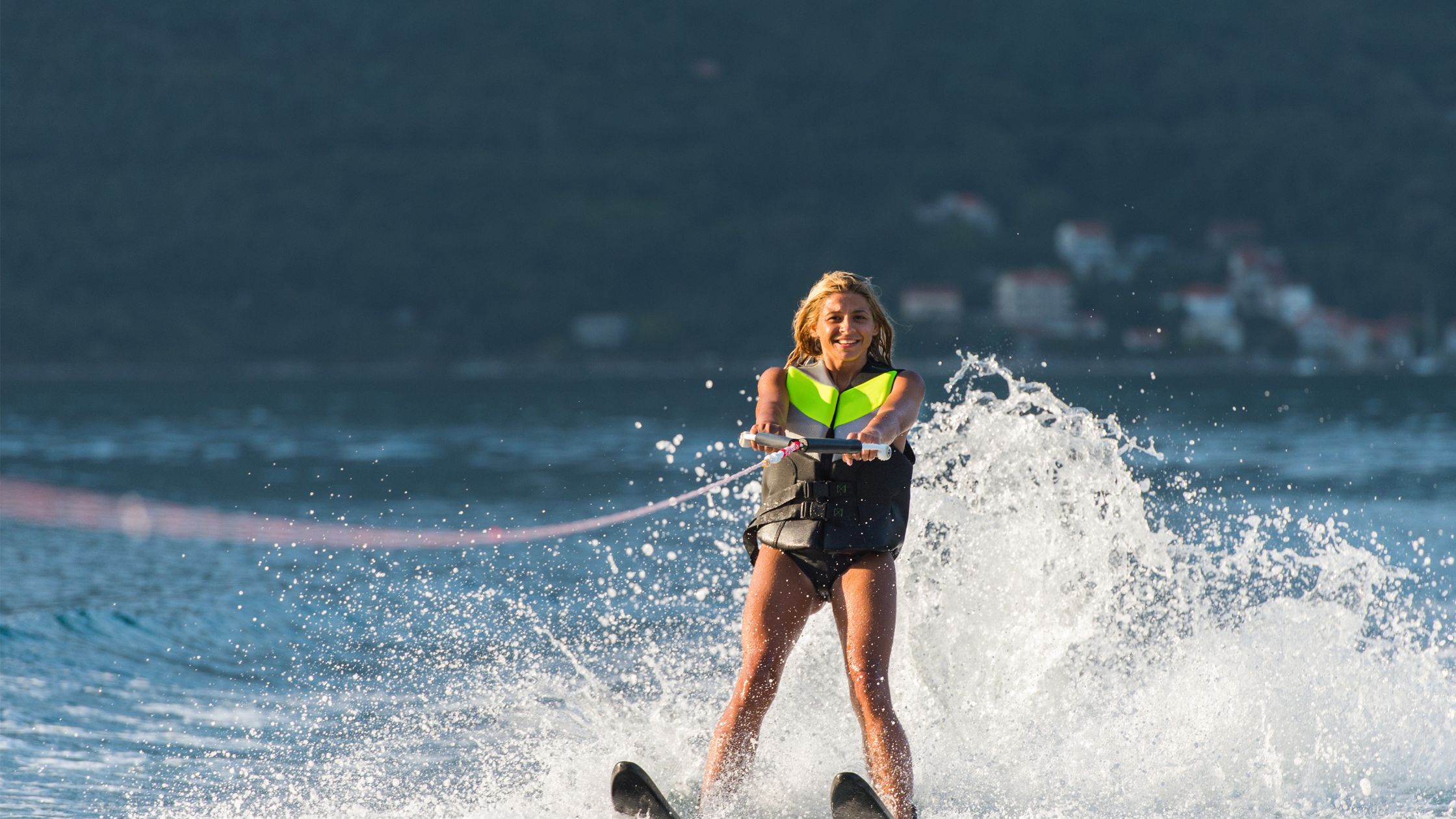
Water Skiing Essentials: Tips and Tricks for a Thrilling Experience
Water skiing is an exhilarating surface water sport where individuals […]
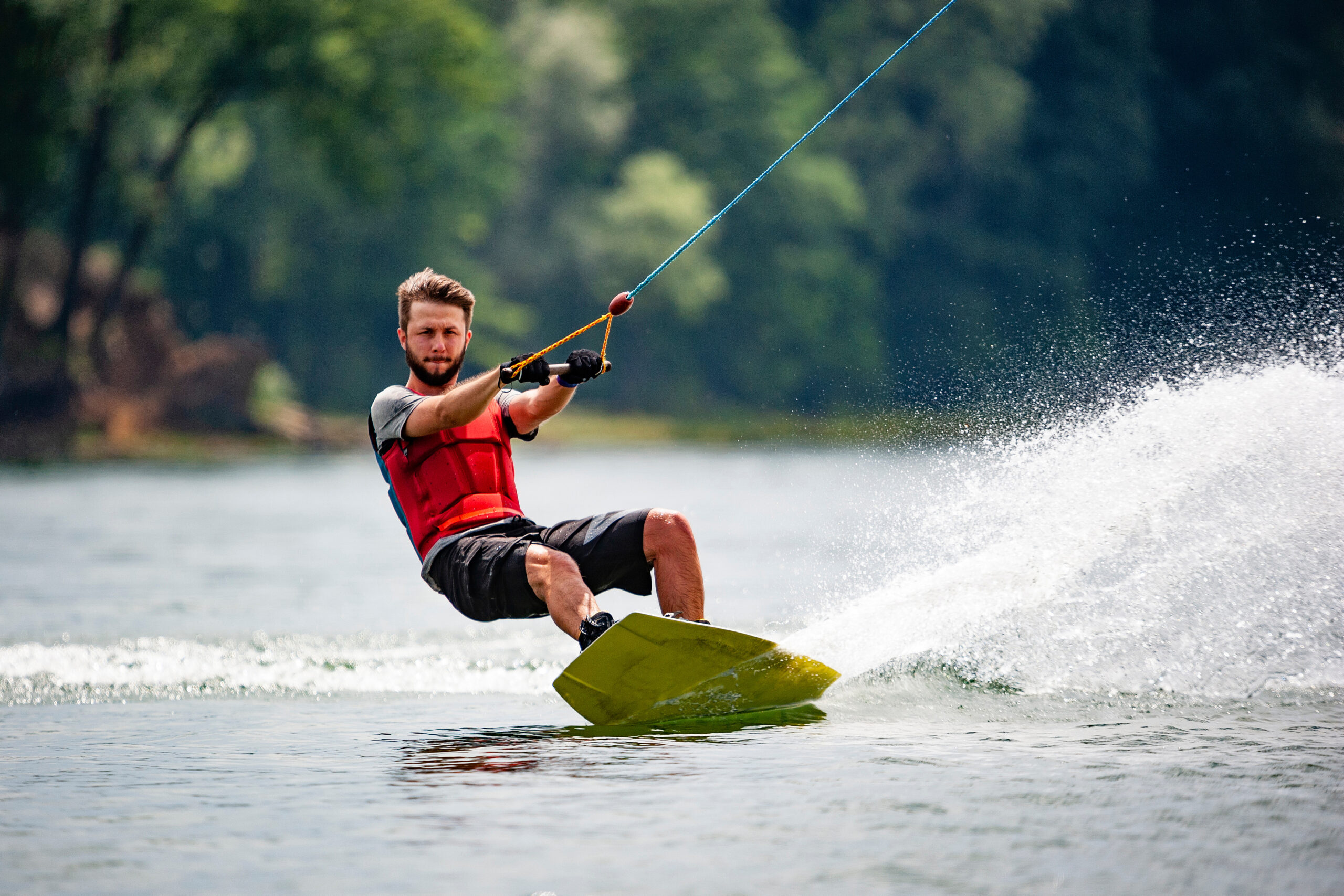
May 31, 2024
Wakeboarding Fun: Tips and Techniques for Every Skill Level
Wakeboarding Tips and Techniques, For Beginners and Pros Wakeboarding is […]
Don't have an account yet? Register
Already have an account? Sign In
Reset Password
Please enter your username or email address, you will receive a link to create a new password via email.
- Israel-Gaza War
- War in Ukraine
- US Election
- US & Canada
- UK Politics
- N. Ireland Politics
- Scotland Politics
- Wales Politics
- Latin America
- Middle East
- In Pictures
- Executive Lounge
- Technology of Business
- Women at the Helm
- Future of Business
- Science & Health
- Artificial Intelligence
- AI v the Mind
- Film & TV
- Art & Design
- Entertainment News
- Destinations
- Australia and Pacific
- Caribbean & Bermuda
- Central America
- North America
- South America
- World’s Table
- Culture & Experiences
- The SpeciaList
- Natural Wonders
- Weather & Science
- Climate Solutions
- Sustainable Business
- Green Living
How sinking of luxury yacht off Sicily unfolded

One man has died and six people are missing after a luxury yacht sank in freak weather conditions off the coast of Sicily.
The 56m British-flagged Bayesian was carrying 22 people - 12 passengers and 10 crew - when a heavy storm that created waterspouts struck early on Monday.
Fifteen people were rescued and a search operation for those unaccounted for - who include the British tech tycoon Mike Lynch - is continuing.
Here is what we know about the tragedy so far and how it unfolded.
What happened to the yacht?
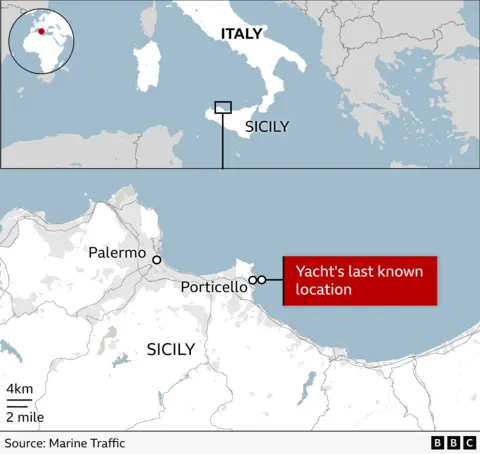
The Bayesian was struck by a sudden and powerful storm in the early hours of Monday morning, witnesses say.
It was reportedly anchored to the sea bed outside the harbour at Porticello, a small fishing village to the east of Palermo, when what the Italian coastguard described as a "violent storm" hit.
The storm was so fierce that it caused waterspouts, or rotating columns of air and mist, to appear over the sea.
The vessel disappeared beneath the water at about 05:00 local time (04:00 BST).
A doctor treating survivors said the ship "capsized within a few minutes".
- Follow live updates here
- 'For two seconds I lost my baby in the sea' - yacht survivor
- Who are the missing and rescued?
- What might have caused yacht to sink
- Divers battle 10-minute dive window and debris in yacht search
Witnesses told Italian news agency Ansa that the Bayesian’s anchor was down when the storm struck, causing the 72m (236ft) aluminium mast to break in half and the ship to lose its balance and sink.
However, divers on the search and rescue team have said the ship was "practically intact" on the seabed, raising questions as to whether the mast was broken.
The ship's unusually tall mast may have contributed to its sinking, according to Matthew Schanck, chair of the Maritime Search and Rescue Council.
He told BBC Radio 4's Today programme that the mast acted almost like a sail in the strong wind "especially with it being so high".
The extreme winds could have caught the mast and pushed the yacht over, he said.
Karsten Borner, captain of a nearby boat, said after the storm had passed, the crew noticed the yacht that had been behind them had disappeared.
"We saw a red flare, so my first mate and I went to the position, and we found this life raft drifting," he told Reuters.
His crew took on board some survivors, including three who were seriously injured.
Another witness, Fabio Cefalù, captain of a trawler, said he was about to go out on a fishing trip when he saw flashes of lightning so he stayed in the harbour.
"At about 04:15 we saw a flare in the sea," he said, according to the EVN news agency reports.
"We waited for this waterspout to pass. After 10 minutes we went out to the sea and we saw cushions and all the rest of the boat [that had sunk], and everything which was on the deck, at sea. However, we did not see any people in the sea.”
Another fisherman described seeing the yacht sinking "with my own eyes".
Speaking to the newspaper Giornale di Sicilia, the witness said he was at home when the tornado hit.
"Then I saw the boat, it had only one mast, it was very big," he said.
Shortly afterwards he went down to the Santa Nicolicchia bay in Porticello to get a better look at what was happening.
He added: "The boat was still floating, then all of a sudden it disappeared. I saw it sinking with my own eyes."
One of the survivors, British tourist Charlotte Golunski, told Italian newspaper La Repubblica how she held up her one-year-old daughter Sofia to stop her from drowning.
She said the two of them and her partner James survived only because they were up on deck when the yacht sank.
They were woken by “thunder, lightning and waves that made our boat dance”, and it felt like "the end of the world" before they were thrown into the water.
Charlotte said: "For two seconds I lost my daughter in the sea, then quickly hugged her amid the fury of the waves."
She added: "I held her afloat with all my strength, my arms stretched upwards to keep her from drowning.
"It was all dark. In the water I couldn't keep my eyes open. I screamed for help, but all I could hear around me was the screams of others."
What is the latest with the search?
Six passengers remain missing and the Palermo coastguard says the search and rescue operation is continuing "incessantly".
The search began on Monday and specialist divers have been working at the site since early on Tuesday morning.
One diver told Italian media the yacht was "practically intact" on its side at the ocean's basin, about 50m below the surface.
The ship's hull is obstructed with furniture and various objects, the Italian fire and rescue service has said.
Divers are looking for ways to access the yacht's cabins, but they have just 10 minutes to search on each dive before they need to return to the surface, the Italian news agency Ansa has reported.
A 1cm thick glass window is also being considered as an entry point.
Francesco Venuto, a spokesperson for Sicily's civil protection agency, told the BBC on Monday rescue teams fear the bodies of those missing "must be" in the boat.
"We've been searching all day with helicopters and boats, we've found nothing. That wouldn't make sense. In these conditions, we should have found something by now," he added.
A specialist caving search and rescue diving team arrived from Rome on Monday, hoping to "achieve results" either during the night or by Tuesday morning at the latest, the director general of Sicily's civil protection agency, Salvatore Cocina, said.
On Monday, the UK's Marine Accident Investigation Branch sent a team of four investigators to carry out a preliminary assessment of the Bayesian's sinking, the BBC understands.
Who was on board?

There were 22 people on board when the storm hit, including 12 passengers and 10 crew.
The body of one man has been recovered. He has not been formally identified, but the Palermo coastguard said he was the ship's cook. His nationality has not been confirmed.
Among the six people still missing is 59-year-old tech entrepreneur Mike Lynch, known by some as the "British Bill Gates".
Mr Lynch founded software giant Autonomy in 1996 and was awarded an OBE for services to enterprise in 2006.
In June, he was cleared of conducting a massive fraud relating to an $11bn (£8.64bn) sale to US company Hewlett Packard.
Afterwards, he told the BBC in an interview he had been able to prove his innocence only because he had the wealth to pay the enormous legal fees required.
The other missing people include Mr Lynch's 18-year-old daughter Hannah, Morgan Stanley International bank chairman Jonathan Bloomer, and Clifford Chance lawyer Chris Morvillo.
Mr Lynch's wife Angela Bacares is among the 15 people to have been rescued, with eight of those receiving treatment in hospital, the Italian coastguard said.
Charlotte Golunski, her husband and daughter Sofia were also rescued and were unharmed, but taken to hospital for check-ups.
She said they had been on the yacht with a group of colleagues.
The daily Il Giornale di Sicilia newspaper reported the vessel had mostly British passengers on board, but also people from New Zealand, Sri Lanka, Ireland and British-French citizens.
A doctor based in Palermo said the "very tired" survivors were "constantly asking about the missing people".
Dr Domenico Cipolla told Reuters that one woman he treated described the trip as a "corporate holiday", with some of those on board "very young".
"There were a lot of work colleagues, friends, a few husbands, wives, or a couple of friends who had joined in," he adds.

What is a waterspout and why do they form?
A waterspout is similar to a tornado and can form over oceans, seas or large lakes.
The western half of the Mediterranean has experienced severe storms since the middle of last week.
Through Sunday night and into Monday morning, a zone of bad weather passed by the north coast of Sicily.
BBC Weather forecaster Matt Taylor said: "A waterspout is a tornado that has occurred over water rather than land.
"They can form during intense storms, on the base of cumulonimbus/thunder clouds.
"Turbulence, and the wind blowing in slightly different directions around the cloud, can cause rotation under the base of the cloud and the spout to form.
"Like tornadoes, they bring powerful winds, but instead of picking up dust and debris they cause a water mist around the column of rotating air."
What is the Bayesian, and who owns it?
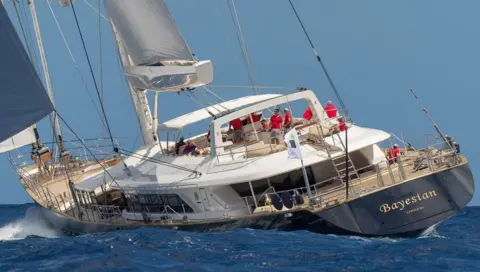
The superyacht can accommodate up to 12 guests in six suites, and is listed for rent for up to €195,000 (£166,000) a week.
It was built in 2008 by Italian company Perini Navi.
The Bayesian's registered owner is listed as Revtom Ltd, which is based on the Isle of Man.
The yacht's name is understood to derive from the Bayesian theory, which Mr Lynch's PhD thesis and the software that made his fortune was based on.
Mr Lynch's wife Ms Bacares is named as the sole legal owner of Revtom, which is registered in the Isle of Man.
The Bayesian completed a number of sailings in recent days, calling at various ports in Sicily, according to ship-tracking website VesselFinder.
A spokesperson for Camper and Nicholsons International, the firm that manages the 2008-built boat, told BBC Verify: "Our priority is assisting with the ongoing search and providing all necessary support to the rescued passengers and crew."
A superyacht captain shares 3 things people who want to charter a luxury vessel should know
- Vacationing on a superyacht may sound like it's all Champagne and sunbathing.
- But before boarding a luxury vessel, superyacht captain Kelly Gordon advises keeping certain things in mind.
- Yachting is a summer pastime with risks and nuances for clients and crew.

Jeff Bezos and Lauren Sánchez soaking up the sun. Travis Barker and Kourtney Kardashian's wedding . Beyoncé's carefree jump into the ocean.
One of these images is likely what comes to mind when you hear the word "superyacht," a phrase generally used to describe a yacht over 80 feet in length.
While ultra-luxurious vessels are associated with all things carefree, tragic events such as the sinking of the Bayesian superyacht off the coast of Sicily on Monday is a reminder that yachting is a pastime with unique risks and nuances. It's unclear what the protocols were on the Bayesian.
For those keen on the idea of chartering a superyacht, captain Kelly Gordon, 42, told Business Insider there are a number of important factors to consider before hopping on board.
Gordon fell in love with yachting after she stepped aboard a yacht for the first time in her mid-20s.
Hellbent on reaching captain level, Gordon quickly worked her way up the chain of command. She's spent most of her time sailing the Bahamas and the Caribbean and is now based in Florida, where she works as a captain on a 108-foot-long privately owned vessel.
Gordon, who has over 12,600 followers on Instagram , shares three factors to keep in mind before boarding a chartered superyacht.
Think of the process of chartering a superyacht as buying a house
One of the most important things to do when chartering a superyacht is to work with a charter broker, Gordon says.
"The charter manager's job is to No. 1: find you a safe boat," Gordon said, adding that in her experience, "Not all programs put safety as high up on the list as it should be."
She also likes to equate charter brokers to Realtors in that they take on the role of finding you the best option for your taste.
Related stories
"You find one that you gel with really well and has a good reputation, and then you discuss with them what your budget is, where you want to go, what your activity levels are, what your personalities are like," Gordon said.
Pairing clients with a crew that aligns with their characteristics is a huge part of a charter broker's job, Gordon said.
"If you think about it, you're living with that crew for 24/7, around the clock," she said. "You're not going put someone that just wants to sit and read books all day with a crew that's extremely active."
Find a crew that is competent and prioritizes safety
Charter brokers also help match clients with a competent crew that prioritizes safety.
"I don't know that many people realize just how much their life is in our hands when we cast those lines and we go to sea," Gordon said.
Part of that is having a safety briefing, which Gordon carries out every time she welcomes clients onto a chartered vessel before leaving a dock.
A thorough safety briefing includes informing clients about the location of safety equipment and lifejackets and the procedures for events such as a fire, a person falling overboard, or the boat sinking.
"You should have a safety briefing, and if you don't get one, you should ask for one," Gordon said.
The process, she added, can be different on privately owned yachts, where passengers may be familiar with the vessel.
The Bayesian is a private yacht owned by tech tycoon Mike Lynch; it's not yet known what kind of safety protocols staff and guests were trained on.
Make sure there's a member of the crew on watch 24/7
"A lot of charter guests think when they go to sleep, the crew goes to sleep," Gordon said.
But that shouldn't be the case, she added. "You want to be on a boat knowing that someone's up, because if the weather changes or the anchor starts to drag, you need somebody that's up and ready to go and get everybody else to handle it."
Among the biggest weather risks are tornados, which can be extremely difficult to predict and prepare for whether you're on land or at sea.
"I'm from the Midwest, where tornados pop up," Gordon said. "It's hard to see a tornado coming, and if you do see it coming, the tornado goes where it wants to go."
Most often, that leaves people near the weather event with just minutes to ready themselves, which is even trickier "in the middle of the night."
While rapid changes in weather are tough to contend with, Gordon recommends researching the areas you are sailing in beforehand, like you would when visiting a new country.
"It's no different than if you're going on vacation on land," she said. "You want to know where you're going. Don't put that just all on the crew."
While the research doesn't have to be as extensive as the crew should be doing, it's important to still be "responsible for your own self as well as your family and your guests."
Watch: Why it costs $1 million a day to run one of the world's biggest cruise ships
- Main content

IMAGES
COMMENTS
Upon the Coast Guard's review and approval, you will be issued your boat captain's license. 2 HOW MUCH DOES A USCG CAPTAIN'S LICENSE COURSE COST? The most popular captain's license course we offer is the OUPV/Six-Pack Captain's License - Online Course and Exam. For those looking to obtain the higher level license, check out the 25/50 or 100 ...
Take your final licensing exam online and on-demand. Start with our OUPV/Six-Pack License for up to 6 passengers, or if captaining a large vessel, check out our 25/50 or 100-Ton Masters. OUPV/Six-Pack Captain's License - Online Course and Exam $695.00. 25/50 or 100-Ton Master Captain's License - Online Course and Exam $895.00.
A Captain's License is required to operate a commercial vessel or to take paying passengers out on your vessel. Understanding the Captain's License Requirements is important prior to taking a captain's license course. ... The required amount of sea service for a sailing endorsement on a Master NC license is: 360 days on sail or auxiliary ...
Our Top USCG Captain's Courses. OUPV/Six-Pack Captain's License - Online Course and Exam $695.00. 4.7. 25/50 or 100-Ton Master Captain's License - Online Course and Exam $895.00. 4.7. OUPV/Six-Pack Upgrade to 25/50 or 100-Ton Master Captain's License - Online Course and Exam $375.00. 4.7.
To be a Captain, one must be in good health and of reasonable physical ability. The Medical form ( CG-719K) is the most extensive form one will need to complete. It also requires the signature of a licensed physician. Unlike an FAA pilot's license, the physician need not be approved by the US Coast Guard.
The USCG Captain's License is a prestigious credential that reflects a captain's knowledge, skills, and commitment to maritime safety. It requires theoretical knowledge, practical experience, and a strong understanding of navigational rules, vessel handling, emergency procedures, and other essential aspects of safe and responsible boat operation.
The master captain's license requirements include that you are at least 19 years old and a U.S. citizen. How to become a boat captain 1. Captains license sea time requirements. To qualify for a USCG captain's license you must have a minimum of 360 days of sea service; of which 90 days must be in the last three years ("recency" clause ...
A Charter Boat Captain commands a small vessel as a master, captain, or skipper and may contain a sailing endorsement for sailing vessels and/or a commercial towing endorsement for vessels engaged in assistance towing. ... These endorsements may be issued to those employed by organizations such as yacht clubs, marinas, formal camps, and ...
A boat safety course qualifies you to operate your personal boat, and have your friends and family on board. A USCG license is needed when you're operating a vessel in a commercial manner. When people are paying you, you need a license to operate. The two common USCG licenses are the Master's License and the OUPV license.
The most common type of license is called the Operator of Uninspected Passenger Vessel (OUPV). This allows you to operate a vessel of 100 tons or less with as many as 6 paying passengers on board. For that reasons, it's often referred to as the "6-pack license.". To get your license, you need two things: time and knowledge.
Set Sail for Adventure: Earn Your OUPV Captain's License in the Keys. July 26, 2024. We are thrilled to announce a unique opportunity to earn your OUPV '6-pack' Captain's License in one of the most beautiful and historic locations in the Florida Keys. From October 5th through October 10th, Sea School is partnering with the Boy Scouts of ...
The USCG does not require you to get a Six-Pack license before you obtain your 25/50 or 100Ton license. If you qualify, you can take the course and examination to obtain your Captain's license. You will satisfy the examination requirements of 46 CFR 11.201 & 11.301 by presenting your certificate within one year of course completion. Subjects ...
Steps to Apply for an Original MMC. Step 1. Determine the Officer and/or Ratings that you wish to obtain by visiting the NMC's Checklist Page. Specific requirements can be found on the checklists. Then come back to this page. Step 2. Obtain a Transportation Worker's Identification Credential. Be sure to list your occupation as a Merchant ...
5 mins read・Mar 06, 2023. The first step you need to take to get your captain's license is to decide which type of license you're going to pursue. There are two main types of Coast Guard licenses: License Type #1 - 25 ton, 50 ton, or 100 ton Master License. License Type #2 - Operator of Uninspected Passenger Vessels (OUPV or Six Pack)
Our captain's license courses can range anywhere from 30-50 hours of study time. We have had students complete our course in as little as 3 days, 3 weeks, 3 months! Once you pass our online proctored exam, we will issue a certificate of completion that fulfills the written requirement for obtaining a USCG Captain's License. You will have 1 ...
But the $40 million sailing yacht sank within minutes and with fatal results: seven dead, including the British technology billionaire Michael Lynch, his teenage daughter, four of Mr. Lynch's ...
A file photo of the Bayesian yacht sailing off the coast of Italy. ... Karsten Borner, the captain of another yacht anchored nearby at the time of the storm, said there was a "very strong ...
Built in Italy by renowned builder Perini Navi and delivered in 2008, the yacht's naval architecture was developed by Ron Holland Design while the interior design is by Rémi Tessier.She was formerly known as Salute and was last refitted in 2016. She was listed for sale earlier this year, according to BOATPro.The yacht had accommodation for nine guests and 12 crew.
Basic Captain's License Requirements. The most common captain's license is the OUPV or Six-Pack, which allows you to commercially captain a vessel with up to six passengers. To earn this license, you must: Be 18 or older. Have legal status to work in the U.S. Pass a drug test and a physical. Acquire a Transportation Worker Identification ...
Bayesian was a 56-metre (184 ft) sailing superyacht, built as Salute by Perini Navi at Viareggio, Italy, and delivered in 2008. [2] It had a 72-metre mast, one of the tallest in the world. The yacht was last refitted in 2020. [3] It was in the legal ownership of Angela Bacares, wife of the technology entrepreneur Mike Lynch. [4] [5] It was at anchor off the Northern coast of Sicily near ...
Emergency workers in southern Italy are still hunting for six people missing after a tornado sank a luxury yacht early Monday - prompting an air and naval operation off the coast of Sicily.
British tech tycoon Mike Lynch and his 18-year-old daughter are among the six people missing after a luxury yacht sank off the coast of the Italian island of Sicily in the early hours of Monday ...
Perm Krai offers 13 sailing yachts for rent · Rental prices start from 190 € per day. ... We speak your language and are here for you 7 days a week. Petra Your sailing assistant [email protected] +44 330 818 0541 +353 1 903 8314 My account ...
A boating license and a boater education certificate are slightly different. A boating license is required in some states to operate a boat legally. Meanwhile, a boater education certificate proves you've completed a safety course. A boater education certificate never expires. This certificate usually doesn't need renewal.
Charter a yacht in Perm Krai's favourite sailing destinations. ⛵Explore Perm & more. Prices from 50 €/day
The captain is among the survivors, the spokesperson for Italy's Coast Guard said. The 56-meter yacht called the "Bayesian," which flies under a British flag, had mostly British passengers ...
The yacht sank after a small waterspout - a type of tornado - spun over the Mediterranean island, likely capsizing the boat, which was anchored about a half a mile from the port of Porticello.
To become a captain of a commercial watercraft carrying more than six passengers, you need a 25-ton, 50-ton, or 100-ton boat captain's license, also known as the Master Captain's License, issued by the U.S. Coast Guard. Inspected vessels, like ferry boats and harbor tour boats, must adhere to strict USCG standards and carry a Certificate of Inspection (COI) dictating passenger capacity and ...
The extreme winds could have caught the mast and pushed the yacht over, he said. Karsten Borner, captain of a nearby boat, said after the storm had passed, the crew noticed the yacht that had been ...
Gordon fell in love with yachting after she stepped aboard a yacht for the first time in her mid-20s. Hellbent on reaching captain level, Gordon quickly worked her way up the chain of command.